

A Guide to Riding the Kyoto Buses
🚌 buses and 🚇 subway.
Kyoto ’s transportation network is much criticized as it does not actually offer comprehensive and comfortable travel solutions:
- The subway covers a limited number of destinations, as its network consists of only two lines;
- The train is mainly intended to leave the city center, and move either westward to Sagano, northward to Kurama or southward to Inari;
- Bicycle is convenient in and around Kyoto’s center. However, its use is rather uncomfortable outside those limits despite recent efforts towards creating more cycling infrastructures;
- Taxi are a convenient solution for a number of routes, but are obviously the most expensive one, and affordable only to a few travelers.
Therefore, and despite the drawbacks of this solution, buses have become the most widely used transportation for visiting the former capital of Japan (and for its elderly inhabitants whose numbers reflect the population decline). Since it is not that easy to find one’s way around with buses, we have devised a guide for traveling smoothly.
🚌 Kyoto buses : network maps, pros and cons
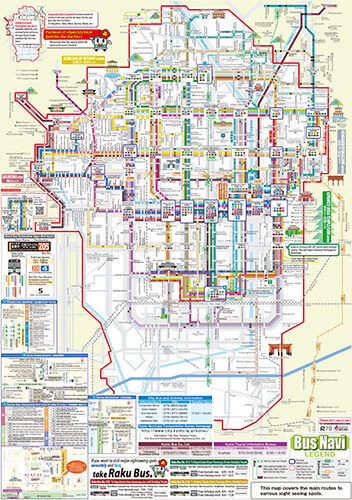
Click on the picture to display it full size.
Kyoto buses have some advantages:
- Since buses use the well-developed Kyoto street and road network , they can cover most tourist destinations;
- They run quite frequently on the most used lines;
- The number of announcements in English , especially for tourist attractions, in increasing;
- "Special" buses, numbers 202 and 205, are loop lines and numbers 100, 101 and 102 serve the most visited places;
- Municipal buses are compatible with IC cards (contactless, like the Suica card ) since 2014.
On the down side:
- One-way tickets are expensive and there is no discount for IC card holders;
- It is impossible to use the Japan Rail Pass in Kyoto buses;
- Most lines have limited schedules and service sometimes ends before 5 p. m.;
- Traffic congestion is increasing in Kyoto, causing buses to run late quite often;
- Information displays only deliver basic, undetailed information, that is not always translated;
- Buses tend to be overcrowded , especially on the main lines and/or during rush hours;
- In most cases, carrying any luggage around will prove impossible;
- As often on Japanese buses, the seat size does not fit people of taller or bigger build.
Fares and Bus passes
Kyoto Municipal buses are painted green. There are two different types which are described in detail below.
Buses serving the city only
They only serve downtown Kyoto; Arashiyama for example is not included and a different rate will apply to get there. Each line number is painted a different color. A single rate applies for all tickets regardless the number of stops or the distance covered:
- Adults: ¥230 (~US$1.50)
- Children from 6 to 12: ¥120 (~US$0.78)
The City Bus All-Day Pass is available to travel an unlimited number of trips per day. It can be bought in all buses or from automatic ticket vending machines at several stops:
- Adults: ¥700 (~US$4.57) since October 2021
- Children: ¥350 (~US$2.28)
The All-Day Pass pays off from the 4th trip on the same day. Be aware, however, that it cannot be used over a 24-hour time span. It is only valid for a day, i.e. from morning through evening. Even if you start using it in the afternoon, it will not be valid any more the next morning.
In February 2023, the scrapping of the "Bus 1-Day Pass" is announced , coming into effect on 2024, April 1rst. It is still purchasable until September 2023 for a use before 2024, March 31. Kyoto city is indeed trying to encourage sightseers to take the subway 🚇 in order to ease bus congestion. The more expensive bus + subway combined pass remains available (see fares at the end of the article).
In 2000, the pass prize was lowered from ¥700 to ¥500, which spurred the sales to one million the same year, and up to 6,14 million in 2015. In March 2018, Then, over a period of a few years, the One-Day Pass’s price rose 🌹 again to ¥600 (~US$3.92), then to ¥700 (~US$4.57) in an attempt to limit its use by tourists.
In June 2023, Kyoto’s municipal government announced seriously considering a specific fare for Kyoto residents, implying an additional charge for Japanese and international tourists. However, this policy must be legally approved by the Japanese Ministry of Land, Infrastructure, Transport and Tourism before its implementation.
Buses serving the city and the suburbs
Their distinctive feature is the line number painted on a white background. The fare is calculated according to the number of stops .
They offer another type of pass called "Kyoto Sightseeing " (half-price for children):
- 1 day: ¥1,200 (~US$7.83)
- 2 days: ¥2,000 (~US$13.05)
When you purchase this pass, you get a free map plus a range of discounts in some Kyoto stores.
Planning an itinerary
The good news for people who like to plan ahead or worry about how to find their way: there is a local version of Hyperdia, called Arukumachi , dedicated to Kyoto's transportation network.
On Arukumachi’s website, you will find information about itineraries, schedules and fares and a downloadable app for smartphone 📱 is available.
How to use the bus in Kyoto
As everywhere in Japan, people wait in line at the bus stop and carefully make sure not to block the sidewalk. Passengers board through the rear door . The procedure may then vary depending on the bus type.
Buses serving the city only:
- You do not have to buy a ticket upon boarding.
- Before your chosen stop, press one of the stop buttons to request the bus driver to stop.
- Or Purchase or show a pass.
Buses serving the city and the suburbs:
- Take a numbered ticket;
- Use your IC card;
- Punch your pass if you already have one; Or,
- Just wait to buy your pass when you get off.
- Before your chosen stop, press one of the stop buttons to request the driver to stop.
- With your IC card;
- By showing your pass;
- By purchasing a pass.
Just like in most buses around the world, the name of the next stop is displayed on a screen in the front part of the vehicle, often spelled out in Japanese and sometimes translated into English.
The machine by the driver’s seat
Located on the left of the driver (who sits on the right-hand front of the vehicle), this machine is intended to handle most passenger-related procedures.
It may be used, among other things, to:
- Get change for ¥1,000 notes (~US$6.53), ideally before you reach your stop so as to avoid blocking traffic;
- Collect your payment through a tiny slot with the exact amount (no change given);
- Pay directly with your IC card, from which the amount will be deducted;
- Punch your pass when using it for the first time (you will only be required to show it to the driver after that).
The simplest way is obviously to use an IC card. If you forgot your Tokyo Suica card for example, it is worth purchasing an Icoca or Pitapa card (the local cards in Kansai ).
Additional advices
Kyoto buses being cramped and overcrowded, it is almost impossible to carry any (especially bulky) luggage around when riding them. Therefore, we strongly recommend the use of the excellent Takkyubin delivery system or simply to hire a taxi if you don’t travel light.
Lastly, all the bus stops in Kyoto city provide free Wifi 📶 (although not on the buses). You just need to connect to the "KYOTO WI-FI" network and agree to the terms of use from the page displayed in your browser. Sessions are 30 minutes long. This service is available from 5 a. m. to 1 a.m.
🚇 The subway : A possible alternative
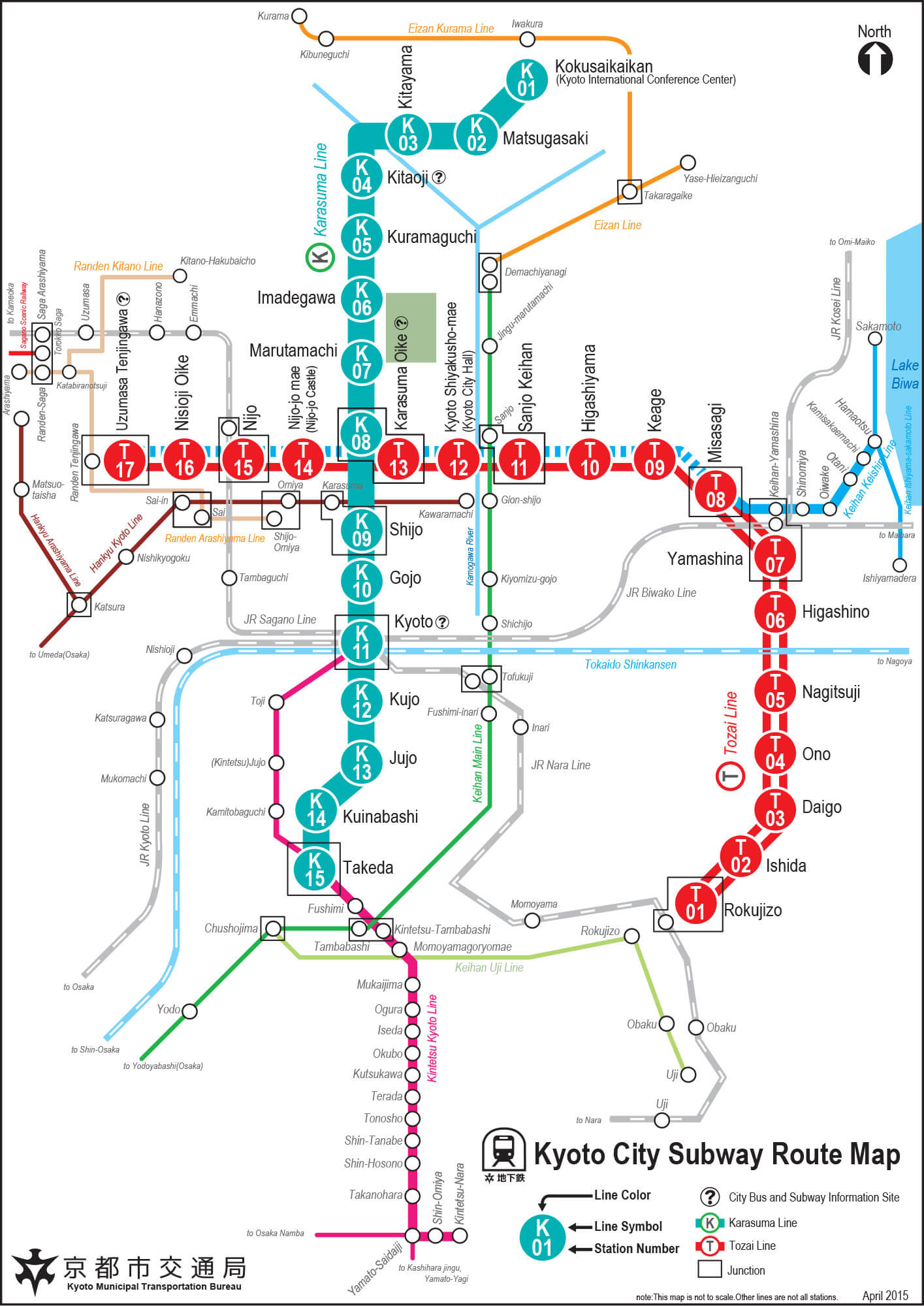
Depending on your destination, it may sometimes prove more convenient to ride the subway. However, although less crowded and free from traffic congestion, it has two main drawbacks. First, its network consists of only two lines:
- Karasuma / K (Turquoise and vertical) north bound to the Kyoto International Conference Center at Kokusaikaikan and south to Takeda, via the Kyoto JR station.
- Tozai / T (red and horizontal, or nearly…), west bound to Uzumasa Tenjingawa and south-east to Rokujizo.
They cross paths at Karasuma Oike in Kyoto’s center.
The second drawback is the price: it is the most expensive subway in Japan, and it nonetheless fails to cover its abysmal losses (8.6 billion Yens in 2010 despite efforts to attract customers). You can pay with your IC card or buy a ticket; fare is calculated according to the distance:
- Adults: from ¥220 (~US$1.44) to ¥360 (~US$2.35)
- Children: from ¥110 (~US$0.72) to ¥180 ((~US$1.17)
The JR Pass is not compatible with the Kyoto subway either which, however, offers an unlimited travel one-day pass:
- Adults: ¥800 (~US$5.22)
- Children: Half price
A combined Pass bus + subway is also available:
- Adults (1 day): ¥1,100 (~US$7.18)
- Children: Half the price
It is worth mentioning that the Arukumachi app also includes Kyoto subway. Please visit this address to download it.
- Flights and Airports
- Accommodation
- Transportation
- Internet & Phones
- Budget and money
- Japanese Food
- Visit with Kids
- Seasons: spring / summer / autumn / winter
- Weather forecast
- Time in Japan
- Holidays & Festivals
- Natural Disasters
- Customs and Duties
- Works and Closures
- From April 29 to 5 May -- Japanese Golden Week
- May 12 -- Mother's Day in Japan
- June 6 -- Beginning of the rainy season (Tsuyu) in Japan
- June 21 -- Summer starts in Japan
- July 1 -- Season start for climbing Mount Fuji
- From July 1 to 31 -- Gion Matsuri Festival in Kyoto with float processions on July 17 and 24
- Tokyo : Shinjuku , Shibuya , Harajuku , Asakusa , Akihabara , Odaiba , Ikebukuro , Ueno , Roppongi , Chiyoda , Ryogoku ...
- Around Tokyo: Kamakura , Nikko , Hakone , Mount Fuji , Mount Takao , Yokohama ...
- Kansai: Kyoto , Nara , Osaka , Mount Koya , Himeji , Kobe , Kinosaki , Kumano Kodo , Ise ...
- Japanese Alps: Kanazawa , Matsumoto , Takayama , Shirakawa-go , Nakasendo ...
- West: Hiroshima , Miyajima , Shikoku , Onomichi , Naoshima , Izumo , Kurashiki , Matsue ...
- South: Kyushu , Okinawa , Yakushima ...
- North: Hokkaido , Tohoku ...

- Temples and Shrines
- Gardens and Parks
- Hiking and Trekking
- Observation Decks
- Public Baths (Onsen and Sento)
- Festivals (Matsuri)
- Amusement Parks
- Visit on a Budget / Luxury

Keikaku is a travel agency specialist of Japan and providing different kind of services:
- Japan Rail Pass
- English speaking Guides
- Pocket Wi-fi
- Japan Nightlife
- Working in Japan
- Religion and Spirituality
- Arts and History
- Movies / Animated Movies
- Japanese Music
- Studio Ghibli
- Photos / Videos
- Weird Japan
- Translations
- Kana & Kanji
- Japanese Swear Words
- Honorific Suffixes (san, kun, chan...)
- Introducing yourself
- Thank you / Apologize
- Count / Say Your Age
- Say the Date / Tell the Time
- Happy birthday
- Enjoy Your Meal
- Writing your name

Kanas are the much-needed basic characters of written Japanese language. Memorize them at a fast pace with our method.

Ask any kind of question and share your knowledge about Japan in Kanpai’s community space, our Q&A section Kotaete.

Isshoni means "together" in Japanese: share your trip details (dates, places you would like to visit) and find companions to travel in Japan.

Create your Kanpai account to manage your profile and view your participation history (questions, answers).

- WHERE TO GO
- CHERRY BLOSSOMS
- FALL COLORS
How to take local KYOTO BUS 🍵 Getting around Kyoto by bus 🍵 Japan travel blog
So taking a bus in Kyoto doesn’t have to be complicated!
Once you take the bus once or twice, you’ll feel like a pro!

The “hardest” part about getting around Kyoto by bus is making sure you get on the right bus.
But even that can be pretty easy – thanks to Google Maps!
I found Google Maps to be a reliable way to getting around Kyoto.
So there are 2 main types of buses in Kyoto.
1. The City Bus
aka shi-basu, with “shi” being city – but don’t always use that as a direct translation – and “basu” being bus
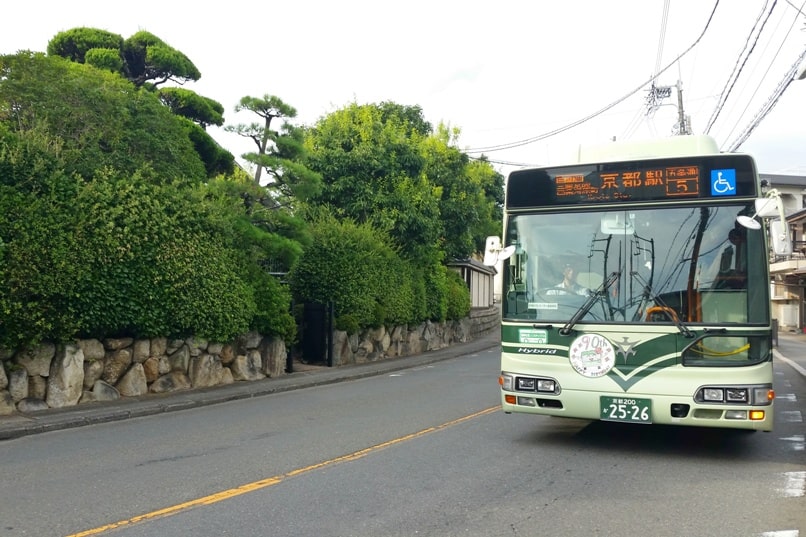
2. The Kyoto Bus
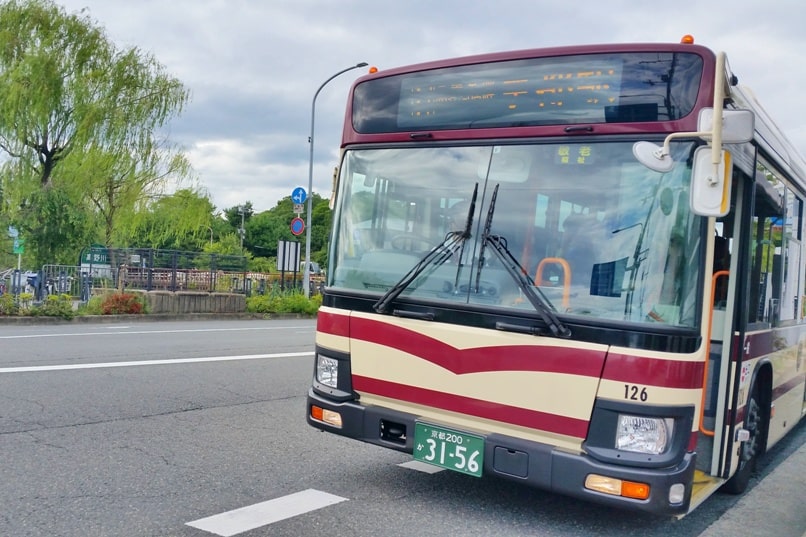
As far as which is best, it really doesn’t matter which one you take to get to your Kyoto destination.
But they are different, and for you the difference that matters is the cost of the bus fare.
Again, I don’t think the cost is that drastically different in most cases to choose one bus over the other, but it’s just more something to be aware of.
So then…
How much is the bus fare in Kyoto?
The city bus is a flat rate of 260 yen per bus ride.
The Kyoto bus is based on where you get on and get off, so the exact bus fare will depend on your route, but it will probably be between 200-500 yen.
More below about what to expect when taking the bus in Kyoto for the first time!
- Best places to visit for your first time in Japan (including famous views!)
- Where to go to see cherry blossoms in Kyoto
- Where to go to see fall colors in Kyoto
- Where to go for winter in Japan
- Where to go to experience tropical Japan
- Where to go for epic snow-capped Mt Fuji views
And here are some of the top places to visit in Kyoto by bus in one day .
How to take the bus in Kyoto
So once you’re at the bus stop, you’ll get on the bus with the route number you’re looking for.
The number is big and obvious so you can’t really miss it.
As you get on the bus, look to the right as you’re getting on.
If there’s a box there with a ticket sticking out…
Grab the ticket!
Or, if you’re traveling around Kyoto with an ICOCA card or another type of IC card , then look for the IC swipe spot, and swipe the card!
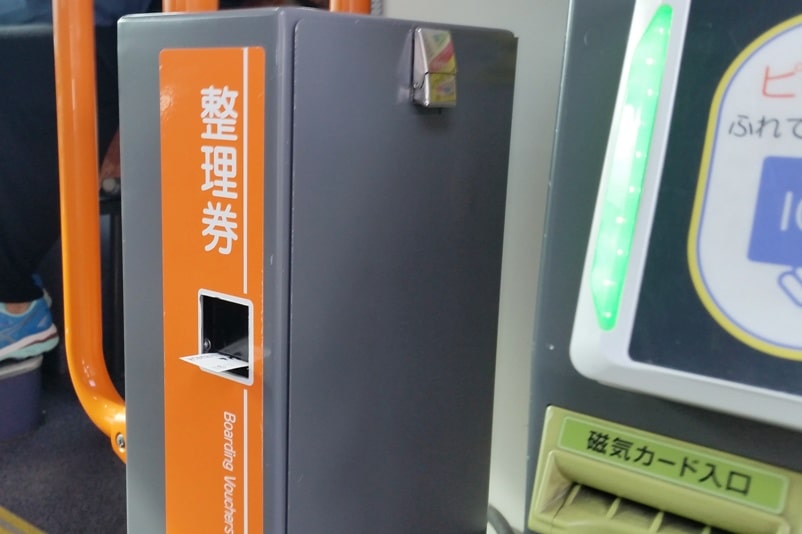
This will ONLY be on buses that do NOT have a flat rate bus fare. (So you will take a ticket for the Kyoto bus.)
But in case you don’t remember which bus is which, just always look for a spot to grab the ticket when you get on the bus. It’ll be a good habit to get into because buses across Japan are like this.
This ticket has a number on it.
And it’s this number that will tell you how much you need to pay. (More on this in a bit.)
Okay, so you’re on the bus.
Hopefully you get a seat!
It’s very possible that you may be standing your whole bus ride.
So follow along on Google Maps with your GPS locator on so you can know when you’re approaching your stop.
When your stop is coming up next, you’ll push the button.
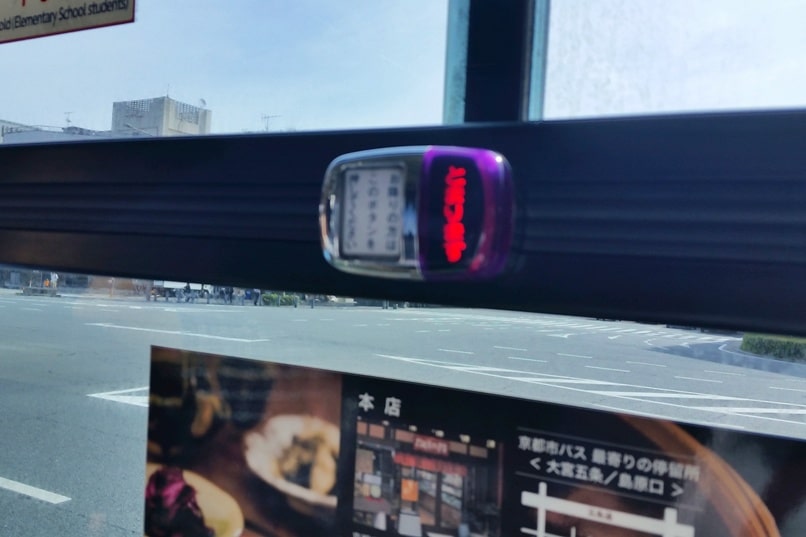
This indicates to the driver to stop at the next bus stop.
The bus stops will be announced, and some buses also have a digital sign board at the front of the bus.

Now, if you’re on a bus that you grabbed a ticket and you’re paying in cash…
There’s a sign board at the front of the bus that will tell you the corresponding rate that you’ll pay once you’re ready to get off. The adult fare and child fare is shown.

Then you’ll pay that amount in cash right before you get off the bus.
You’ll drop the exact change into the fare box. There’s a change machine if you don’t have exact change.
Or you’ll swipe your IC card if you’re traveling with that.

And you’re done!
Now, there are actually 2 more type of buses in Kyoto that you’ll probably see around.
The above “City bus” and “Kyoto bus” are the main ones.
The Raku bus

The city bus and the Kyoto bus are basically the regular buses.
And then there is also the Raku bus, which is actually a type of city bus, but it looks a little different from a regular city bus.
The Raku bus is basically a tourist bus with a route that caters to the Kyoto sightseeing spots.
The bus fare for the Raku bus is a flat 230 yen per ride.
The boarding process and payment process is a little different with the Raku bus. You’ll board at the front, and also pay as soon as you get on the bus.
It may sound confusing that there are different procedures, but basically once you’re there, just follow the crowd and you’ll be able to figure it out!
The JR bus with a JR pass

If you are traveling around Japan with a JR pass , you can also use that pass to take the JR bus.
The JR bus is the ONLY bus in Kyoto that you can take and ride the bus for free in Kyoto.
This JR bus route is a bit limiting, and doesn’t go to many of the top spots in Kyoto, but you can get to a few places with it.
See the JR bus route here .
And then finally…
Kyoto bus pass

You might also consider looking into getting a one day Kyoto bus pass to make a part of your multi-day Kyoto itinerary !
This one day pass will cover all bus rides for the day on both Kyoto buses and City buses.
And that’s a bit about taking the bus in Kyoto!
Happy getting around kyoto by bus.

More of where to go in Kyoto by public transportation:
- Kurama to Kibune hike (aka temple to shrine hike)
- Day trip to outskirts of Kyoto (aka trip to rural village)
- Where to go by local JR train (aka where to go with a JR pass)
Long distance bus in Japan:
- Tokyo to Kyoto by bus
- Tokyo to Nagano by bus
Here are ideas for your Kyoto itinerary !
- Day 1: Top tourist spots with one day bus pass
- Day 2: Fushimi Inari Shrine hike through 1,000 torii gates
- Day 3: Philosopher's Path walk
- Day 4: Arashiyama and Sagano
- Day 5: Kurama Kibune Ohara with one day pass
PLUS Kyoto cherry blossom itinerary and Kyoto fall colors itinerary !
Is a jr pass worth it.
- Google maps can make it easy to figure out whether or not you should get a JR pass!
- In google maps, type in your departure and arrival city, and choose the transit icon. The route will come up, and so will the estimated cost at the bottom!
- Here is an example of a train route with cost on google maps.
- So do that for all of your long distance routes to figure out how much it might cost.
- Next, go here to see how much a JR pass costs from an official JR pass vendor (and partner of this website).
- And compare!
- Not all forms of public transportation are JR, but long distance shinkansen bullet trains are, and that's where the most cost savings will come.
Best of Kyoto (and Japan!)
- Best temples to visit in Kyoto
- Japanese gardens in Kyoto

- Tours & Experiences
- Tailor-made Trips
- Bahasa Indonesia
We are happy to see you again!
Continue with
Or use email.
No Account? Create one
Create account
Already have an account? Sign in
Quickly Sign up with
I agree to Japan Travel's Terms of Service and Privacy Policy . Terms of--> and acknowledge that Japan Travel's Privacy--> applies to me.-->
Email reset password link
Please check your inbox and click the link we will send to you.
- Transportation
Kyoto by Bus
Inside guide and tips to the bus network

Kyoto is a reasonably compact city with grid like streets, but it is not small enough for you to walk to all the sights. This is where the bus comes in. While the subway is quick and hard to get lost, most sights are actually some distance from the subway or train station, except Nijo Castle , Imperial Palace, the Furniture District in Ebisugawa and Gion . So invariably you need to learn how the buses work.
Luckily the buses are designed for the tourist in mind, and especially if you start with some of the loop (circular) routes, you will get to know your bearings within a day or so.
These loop buses are called raku bus, routes 100, 101 and 102, taking you to places like the golden temple (Kinkakuij).
The ¥600 day pass is a great deal, and it pays for itself after three trips. What’s more, if you get lost or go past your stop, you can always get another bus back without worrying about paying another fare with the day pass. Alternatively, for ¥900, a combined bus and subway pass is another option. Both day passes expire at midnight, so it is best to use these passes from the morning.
There are some basics when you use the bus:
- There are two kinds of buses in Kyoto City. The city buses are green and white.
- Board at the back The entrance is actually at the back door, which makes it easy if you are running for the bus.
- There is a taped announcement for the next stop. This is in English and Japanese, as well as a running display. When your stop is up, press the stop button and go the front to exit.
- You pay your fare when you get off. To use the bus within the city center, the fare is ¥220 for adults, and ¥110 for children (aged 6 to 12 years).It doesn't matter if you are traveling one or ten stops, as long as you are in the city bus the fare is the same. So you may as well walk if you are just going one stop.
- Buses can get quite full, especially near the main centers. This includes Shijo, Gion or JR Kyoto. Knowing the other routes besides the raku bus may help you skip the crowds, such as the 204 and 205, which also gets you to Kinkakuji . Alternatively plan a day seeing the sights near the train when it is crowded (e.g. spring and autumn weekends and main festivals/ public holidays. If you are in a group of three or more, a taxi or guided taxi may be more comfortable for you.
If you are not going to cover a lot of ground in a day, hiring a bicycle is often a good alternative (see these cycling rules ).
If you are heading out of the city center, however, you are likely to get an outer suburban red and white bus, to places like Ohara . These buses have a route number in black on a white background, and the fare depends on the distance traveled. Be sure to take a numbered ticket from the machine on your left when you board the bus. When you get off the bus, check the fare against your numbered ticket, and put the fare and ticket in the machine next to the driver. If you don't have exact change, then there is a change machine slot next to the driver which you can get change, preferably before your stop so you don't hold other people up. If you are using a prepaid bus card, make sure you to put your card into the card reader machine
Getting there
Kyoto Station Bus Terminal is a 2 minute walk from the north exit of JR Kyoto Railway Station.
- Share on Facebook
- Share on Twitter
- Copy link to share
By Bonson Lam
Community writer

Information
Kyoto ( Directions )
city.kyoto.lg.jp
Book your trip
Find a nearby hotel, explore nearby.

A Journey Between Tradition and Modernity
By Nick Arcivos

Molette Omelet Restaurant JR Kyoto

Kyoto in Video
By Jillian Engelhard Fosten

Kyoto Snapshots
By Amber Mezbourian
Top Articles
- Recommended

Mount Omuro

Tokyo Named #1 City for Food and Drink

2024 Grand Sumo Tournaments

Haneda Airport Ranked World's Cleanest

Tokyo One of the World's Most Walkable Cities

Kurobe Unazuki Canyon Route to Link with Tateyama Kurobe Alpine Route

Valley of Witches: a New Ghibli Park Attraction

Sapporo Beer Opens New Brewery in Tokyo’s Ebisu

Guide to Golden Week

Tokyo Takes 2nd Place on Top Coffee Cities List

Guide to Bringing Medicines Into Japan

Your Name: Real-Life Locations in Tokyo

Hachiko Statue in Shibuya

Iwatayama Monkey Park

Daikoku Car Meet

Shibuya Crossing

Guide to Suica Cards

Japanese Urban Legends

Black Eggs of Owakudani, Hakone
More from this category.
By Sarah Endarastya
Haneda Airport Ranked World's..

Major Airports in Hokkaido
Tokyo one of the world's most.., join the discussion.

Let us know how we can help.
Help us improve JapanTravel.com
We welcome any suggestions regarding this content. Your feedback is confidential and will be used to help improve this page.
Suggest an edit
https://en.japantravel.com/kyoto/kyoto-by-bus/1185
Thank you for your support!
Your feedback has been sent.
The ultimate guide to getting around Kyoto

Dec 17, 2023 • 6 min read

Cycling is one of the many wonderful ways to explore Kyoto © Satoshi-K / Getty Images
Kyoto is a relatively compact city with a great public transport network, making traveling around a breeze. Its easily navigable streets and mostly flat ground also mean it's an enjoyable destination to explore by bike or on foot.
We've got all the insider tips and tricks you need to easily get around in Kyoto .
Get around major sights quickly on the subway
Kyoto has two subway lines: the Karasuma Line, which runs from the north of the city to the south, and the Tozai Line, which runs from east to west. They intersect in the city center at Karasuma Oike Station, where you can transfer between them. Both also connect with other railway lines at various stations, creating a comprehensive network.
Despite having only two lines, the subway is a convenient option for traveling to many key spots in downtown Kyoto and the Higashiyama sightseeing district. It’s quick and comfortable, easier to navigate than buses and cheaper than taking a taxi. Unlimited day passes are available, which also get you discounts at several tourist spots, including Nijō-jō castle and the Kyoto International Manga Museum . For more coverage, you can buy one- and two-day passes that give you unlimited travel on both the subway and the city buses.
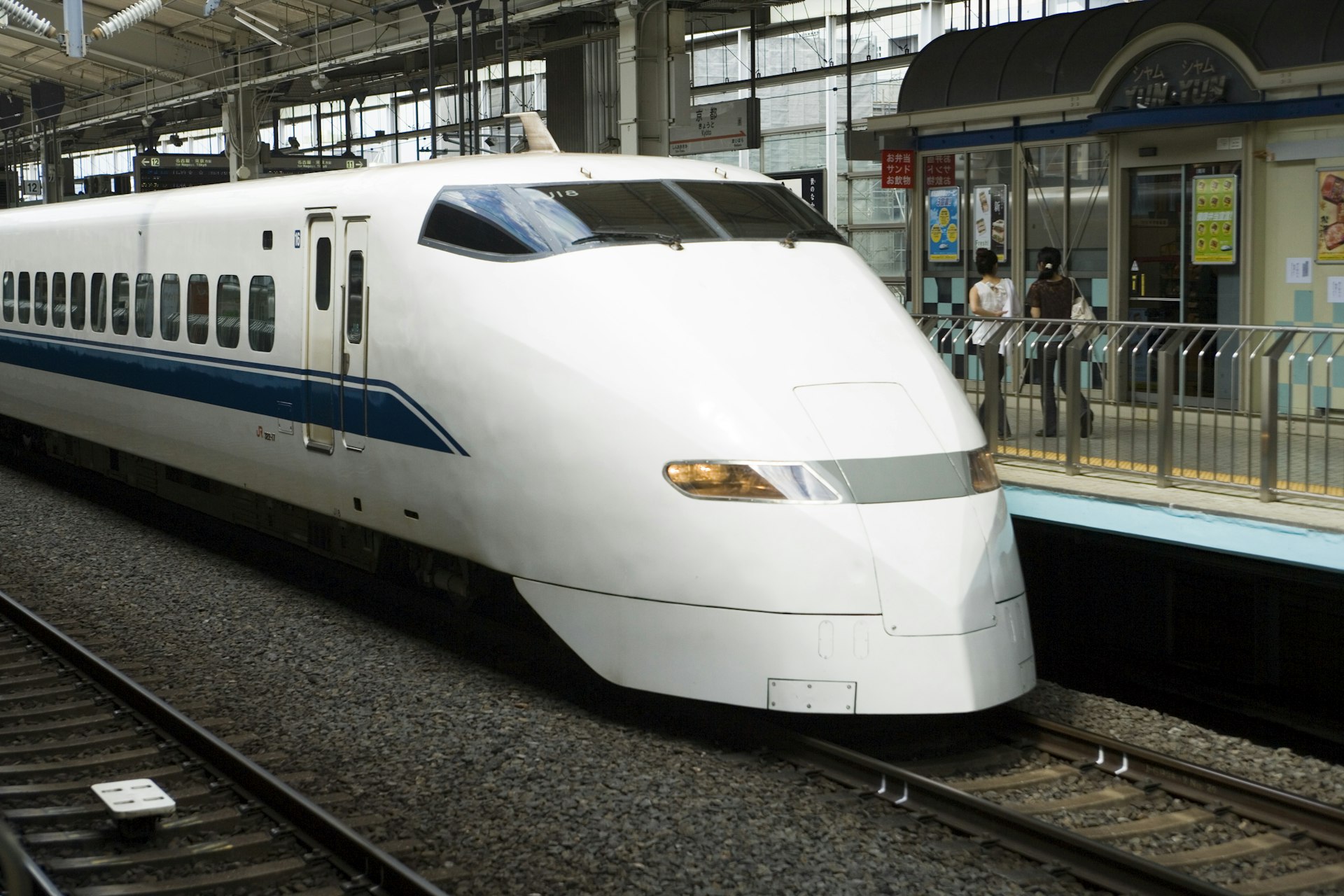
Explore beyond the center on a train
Japan is famous for its excellent rail systems, and Kyoto is no exception. Several train lines operate within the city, including national JR lines and local private ones. You can expect services to be comfortable and clean and depart precisely on time. The train is often the best way to reach parts of Kyoto that are slightly farther out, such as Arashiyama , Tōfuku-ji temple and Fushimi Inari-Taisha shrine. It’s also the most convenient way to travel to nearby cities like Osaka and Nara .
HyperDia is one of the best English-language sites for planning your journey, and you can buy tickets from booths in the station or one of the many automatic ticket machines. Don’t worry if you make a mistake, as most stations also have fare adjustment machines by the exit barriers, where you can pay any extra charge and get a new ticket.
The bus covers parts of the city that trains don't reach
Many of Kyoto’s most popular attractions – including Kinkaku-ji and Ginkaku-ji temples – are not located near train or subway stations, and the bus is the ideal option to bridge the gap. Kyoto has a wealth of bus routes operated by a few different companies, and most make announcements in both English and Japanese. Buses can get very crowded at times, especially during the spring cherry blossom and fall foliage seasons. The quicker option is often to walk or cycle.
On most buses, you board at the back and exit at the front. To pay your fare, put the exact change in coins into the box next to the driver as you get off (there’s another machine next to it that breaks down coins and ¥1,000 bills). Within the city center, it’s a flat fare of ¥230 per journey, and on longer routes, you take a numbered ticket when you get on and use that to check your fare on the screen at the front when you exit. Unlimited day passes are available for use within the flat fare zone.
Get an Icoca card for cash-free payments
Kyoto has a prepaid IC card called Icoca , which you can use on the subway and virtually all the city’s trains and buses (as well as those in several other cities). These don’t offer travel discounts but are much more convenient than queuing up to buy paper tickets or finding change for the bus (if you’re coming from Tokyo, you can use the Pasmo IC card in Kyoto, too). If you have a JR Pass, you can use it for unlimited travel on the JR train lines in Kyoto, but it’s unlikely to save you money if you only use it within the city.
See the city on two wheels
Cycling is one of the best ways to get around Kyoto. The city is mostly flat and easy to navigate, with well-maintained roads and plenty of shops where you can rent bikes. The challenging part is finding somewhere to park your bike, as you must use designated parking areas – if not, you may find your ride gets impounded.
Most temples, museums and other tourist spots have small parking areas for bikes, and there are also some city-operated ones in busy locations. When riding, cycle on the left-hand side of the road or use a shared sidewalk with pedestrians. Helmets are only a legal requirement for children under 12, but you must use a light if cycling at night.

Walking around Kyoto is a pleasure
Kyoto is an extremely walkable city thanks to its compact size, flat ground, high levels of road safety and logical layout. Exploring on foot gives you the chance to discover more of the city's atmospheric streets and scenic pathways. Some of the most pleasant walking routes include the Path of Philosophy , which runs along a canal between Ginkaku-ji and Eikan-dō temples, and the footpath beside the Kamogawa River. Higashiyama and Arashiyama have walking routes that link up many of their famous sightseeing spots, though these get busy during the peak cherry blossom and fall foliage seasons.
A taxi is a cheap option for groups
Taxis are commonplace in Kyoto, and it’s easy to flag one down on the street or hop in at a taxi rank. Drivers will open and close the rear door for you automatically. Fares are displayed on a meter inside, and although an expensive option for solo travelers, it can be cheaper than getting the bus if you’re in a group.
Many drivers speak limited English, so it’s helpful to have your destination written down in Japanese to show them (hotels often give you a business card for this reason). Alternatively, if you’re at Kyoto Station or using the Japan Taxi app, you can take a clearly marked “foreigner-friendly” taxi at no extra cost.
A car is a hindrance in the city
Renting a car is not necessary to get around Kyoto city, and it’s often actually more inconvenient. However, a car can be useful if you’re planning to visit some of the more remote parts of the wider prefecture . Those who choose to drive will need an international driving license. Driving in Japan is generally safe, although navigation can be tricky if you can’t read Japanese.
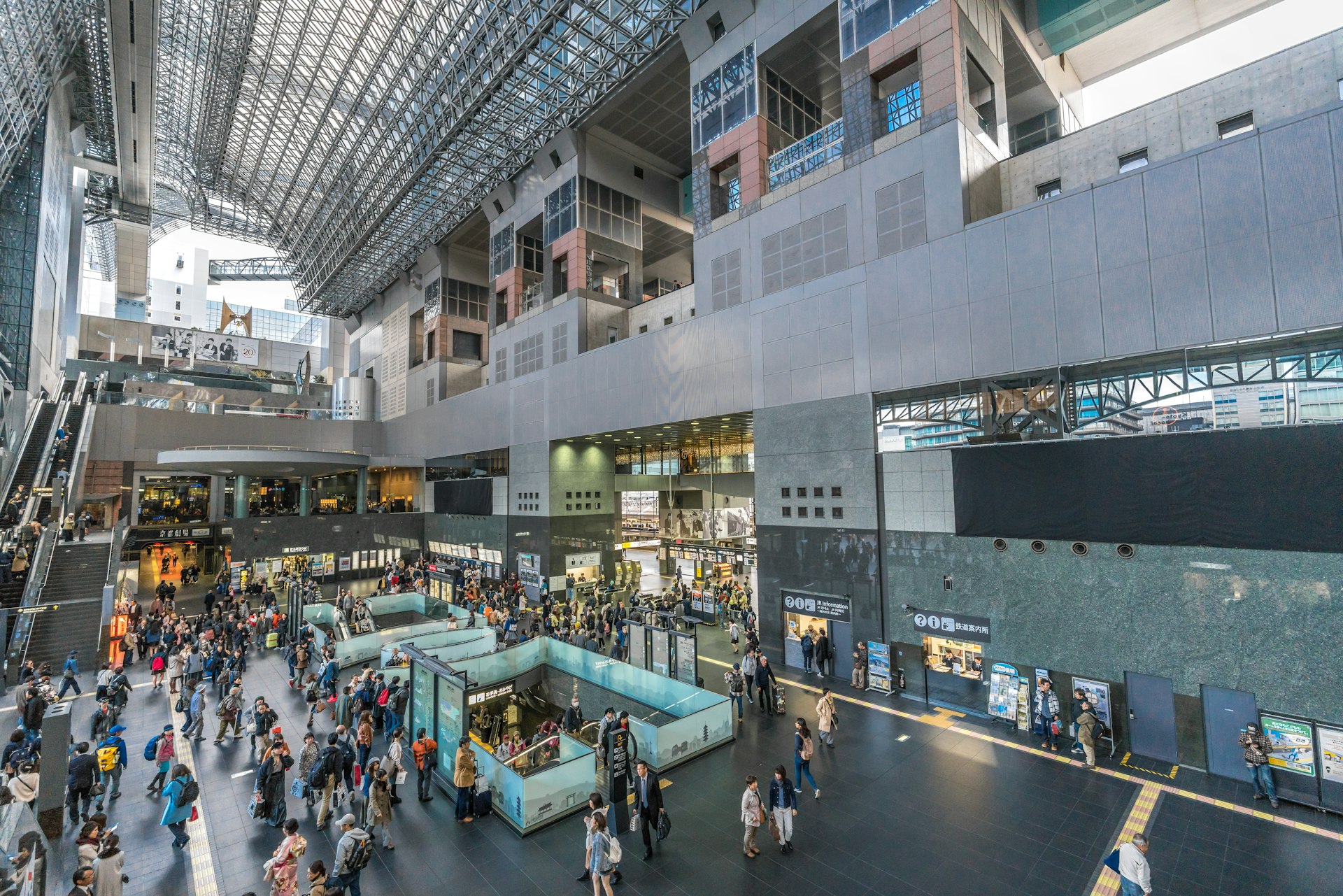
Accessible transportation in Kyoto
Accessibility in Kyoto has improved greatly in recent years, particularly in the city center. Most large train and subway stations have wider ticket gates and elevators to access the platforms, and the majority of train lines have priority seats and carriages with spots for wheelchairs.
You can always ask the station staff if you require assistance. Raised blocks on station floors and platforms assist passengers with visual impairments. The majority of buses that run in the city center are now accessible. The driver will set up a ramp for wheelchair users to get on and also help you off at your destination.
Click here to download Lonely Planet's free accessible travel resources.
This article was first published Dec 21, 2021 and updated Dec 17, 2023.
Explore related stories
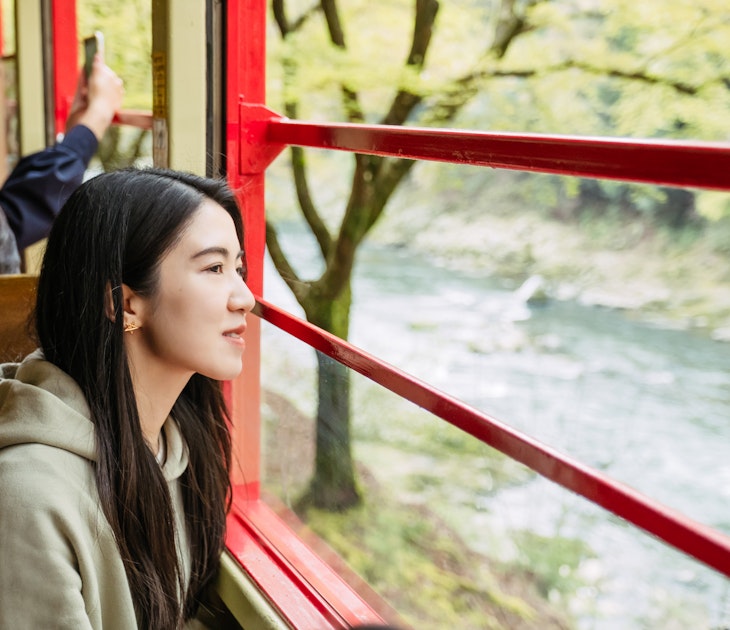
Destination Practicalities
Mar 25, 2024 • 9 min read
With its myriad islands, towering mountains and megacities, Japan can be a daunting destination to get around. We've got everything you need to know.

Mar 23, 2024 • 11 min read
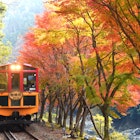
Mar 1, 2020 • 2 min read

Jan 31, 2020 • 7 min read

May 3, 2024 • 14 min read

May 1, 2024 • 9 min read

Apr 14, 2024 • 6 min read

Mar 31, 2024 • 7 min read

Mar 28, 2024 • 7 min read

Mar 28, 2024 • 6 min read
How to Stay at a Ryokan
Day Trips from Kyoto
48 Hours in Kyoto
Things to Do in Kyoto
Temples to Visit
Maiko Shows
Kyoto's Bamboo Forest
Foods to Try
Top Restaurants
Nightlife in Kyoto
Nishiki Market Guide
Best Time to Visit
Weather & Climate
Kyoto's Best Neighborhoods
Public Transportation
Getting Around Kyoto: Guide to Public Transportation
:max_bytes(150000):strip_icc():format(webp)/jessicaesaprofile-7bb1d24acee44aa5839ac875cb2e0bff.jpg)
TripSavvy / Ellen Lindner
Despite being an ancient city—indeed, Japan’s ancient capital—Kyoto, like every other city in Japan, has been very much modernized with an easily navigable transport infrastructure. It's simple to get around Kyoto, with bus routes and the subway being your best and most efficient options. Learning to navigate Tokyo’s intense subway and train networks can take weeks of practice, but Kyoto can be easily navigated immediately. The subway is stripped down and clear to understand, and the bus network may look daunting but can get you wherever you want to go.
You can use Google Maps to help you get around in Kyoto or you can use the dedicated Arukumachi KYOTO App which provides routes, timetables, and fares for buses and rail.
Also, as Kyoto is a particularly walkable city, you’re rarely more than 20 minutes walk from a nearby station. It’s a beautiful city with interesting shops and restaurants tucked around every corner so walking around will reveal a lot. People love cycling in Kyoto so renting a bike is another great option. But for those times when you really need transport, here’s how to navigate Kyoto’s fantastic public transportation system.
How to Ride the Kyoto Subway
Catching the subway is the quickest way to get around the city but, as there are only two lines , people tend to use the buses more for the extended reach. You can catch the north-south Karasuma Line which goes through Kyoto Station or the east-west Tozai Line which can take you to the Higashiyama sightseeing district. The lines then meet in the middle. To get from Kyoto Station to downtown Kyoto the Karasuma line is the best option available.
Although not as cheap as the buses, taking the subway is a quick and definitely easier to navigate. It’s also much cheaper than catching a taxi in Kyoto (unless you’re in a large group and aren’t traveling far).
Fares: Depending on the length of your journey, fares range between 220-360 yen. You can get a 10 percent discount if you use a prepaid card.
How to Pay: You can use coins or cash in the tickets machines with the subway station or purchase a Kyoto City Subway One-Day Pass . You can buy these in the subway stations or from Kyoto Tourist Information Centers and they come with a range of discounts for local museums and attractions. Alternatively, you can purchase the Traffica Kyoto Prepaid Card from the subway stations (1,000 or 3,000 yen) which you can then top up and use on the buses and subway. If you have an IC card— one of the ten interchangeable subway cards that can be used all over Japan (such as Pasmo or Suica)—it can also be used and purchased here. They work the same way as the Traffica card. Picking up a card is by far the easiest way to navigate the public transport.
Routes and Hours: The subway runs between 5:30 a.m. to 11:30 p.m. daily, which can be awkward if you want to enjoy the Kyoto nightlife. For this reason, booking your hotel within walking distance of the center is a good idea or be prepared to take a cab.
Navigation: As there are only two lines, navigating the Kyoto subway is very simple. Stops are written in romaji or English (as well as kanji) and there are maps in each station you can look at. Station conductors are also very happy to help.
Service Alerts: The HyperDia app will keep you updated on any issues on public transport and you can also check out the JR West Japan Railway website for updates.
Accessibility: Many of the stations in Kyoto have lifts and a minimal gap between the train and the platform edge, you can check the accessibility of each station on the Japan Accessible Tourism website .
How to Ride the Kyoto Buses
The buses run all over Kyoto and cover many of the areas the trains don’t reach but they’re notoriously busy during commuting times and are best avoided during those times. Buses are boarded from the back and exited from the front. Once you’re onboard, all announcements are made in both Japanese and English. When you're ready to get off, just press the button before your stop.
Routes and Hours: Using a travel app is the easiest way to figure out the bus you need and you can get to most of the tourist sites by bus from Kyoto Station. The buses run from 5 a.m. to 11 p.m. daily.
Fares: To pay your fare just place the change in a box next to the driver as you’re leaving the bus; there’s a flat fare within the city of 230 yen per ride. If you don’t have the exact change then you’ll find a machine under or next to the box which will provide you with the change, or you can tap your travel card which is much easier. If you’re taking a bus outside the city flat fare zone then you’ll need to take a ticket and wait for your fare to show up on the screen or just tap your travel card at the beginning and end.
Using Taxis in Kyoto
It’s really easy to catch a taxi in Kyoto and, although they’re not the cheapest option, they’re great if you need to get somewhere quickly or you miss the last train back. Also, if you’re traveling as a group, it can sometimes be cheaper or the same price to take a cab. You’ll always find taxis outside the subway and train stations, major tourist sites, or shopping centers. It’s also fine to hail a cab on the street by sticking out your hand.
You’ll be able to tell if they’re available if the light on the windshield is on and displays the 空車 sign. Alternatively, if it’s full, the cab will display 賃走中. You can also just check to see if there are people inside. There aren’t any rideshare apps or apps to help you call a cab in Kyoto so hailing is the easiest way to get going.
Kyoto taxi drivers always use the meter and are licensed, so you won’t have to worry about being ripped off. It’ll help to have your destination written in Japanese or have your map open just in case the driver doesn’t speak English. The ride will cost you 600 yen for the first 2 kilometers (1.2 miles) then 80 yen per 415 meters after that; you pay in cash, though some cabs will take a credit card.
Tip: During holidays like Golden Week and the cherry blossom season, the traffic in Kyoto can be exceptionally bad in the tourist areas so taking the subway will be much quicker in this case.
Getting to and From the Airport
Kyoto actually has three surrounding airports but thankfully they’ve all got great transport links so you won’t have any trouble getting to the center. The closest airport is Osaka Airport (a 50-minute drive from Kyoto) but this mainly serves domestic flights.
If you’re arriving internationally then you will very likely be arriving at Kansai Airport (a 90-minute drive from Kyoto). One of the best ways to travel from either airport is by using the Airport Transport coach service, you can purchase tickets at the airport or you can book online . Tickets range between 1,000-2,000 yen. The quickest way to get to the center from Kansai Airport is using the Limited Express Haruka train which costs 2,900 yen and takes just over an hour. You can access the train from terminal one, platform four and you buy tickets on the day from the ticket machine.
If you arrive at the third Central Japan International Airport, then your best option for getting into Kyoto will be by train, it takes around 90 minutes and costs 850 yen. Tickets can be purchased from the machine at the station.
Leaving the City
If you’re hoping to travel around Japan from Kyoto, it couldn’t be easier. The high-speed Shinkansen leaves from Kyoto Station and you can reach a number of exciting destinations within a couple of hours. Alternatively, you can reach Osaka and Nara using the local trains from Kyoto Station. You can take the 45-minute Miyakoji Rapid Service train to Nara and if you’re going to Osaka, take either the Hankyu Line or the Keihan Line. It’ll take around 45-minutes to get to Osaka or 15 minutes by high-speed train.
Getting Around Osaka: Guide to Public Transportation
Getting Around Pittsburgh: Guide to Public Transportation
Getting Around Beijing: Guide to Public Transportation
Getting Around Mexico City: Guide to Public Transportation
Kyoto Guide: Planning Your Trip
How to Travel From LaGuardia Airport to Brooklyn by Subway, Bus, and Car
Getting Around Salt Lake City: Guide to Public Transportation
Getting Around Madrid: Guide to Public Transportation
Getting Around New Orleans: Guide to Public Transportation
New York City Guide: Planning Your Trip
JFK Kennedy Transportation
Getting Around Seattle: Guide to Public Transportation
Getting Around Frankfurt: Guide to Public Transportation
Your Trip to Osaka: The Complete Guide
Getting Around Paris: Guide to Public Transportation
The Top 12 Day Trips From Kyoto
- For Media & Travel Trade

- About Kyoto
- Arts & Crafts
- Town & Architecture
- Temples & Shrines
- Eat & Drink
- Festivals & Events
- Accommodations
- Activities & Experiences
- Sustainable Activities
- Morning & Nightlife
- Itineraries
- Families with kids
- Travel Tips
- Destination Index

By using this site, you agree to the use of cookies. See our privacy policy for more information. This site uses machine translation, so content is not always accurate. Please note that translated content may differ from the original English page.
Sky Hop Bus (Hop On Hop Off Bus)
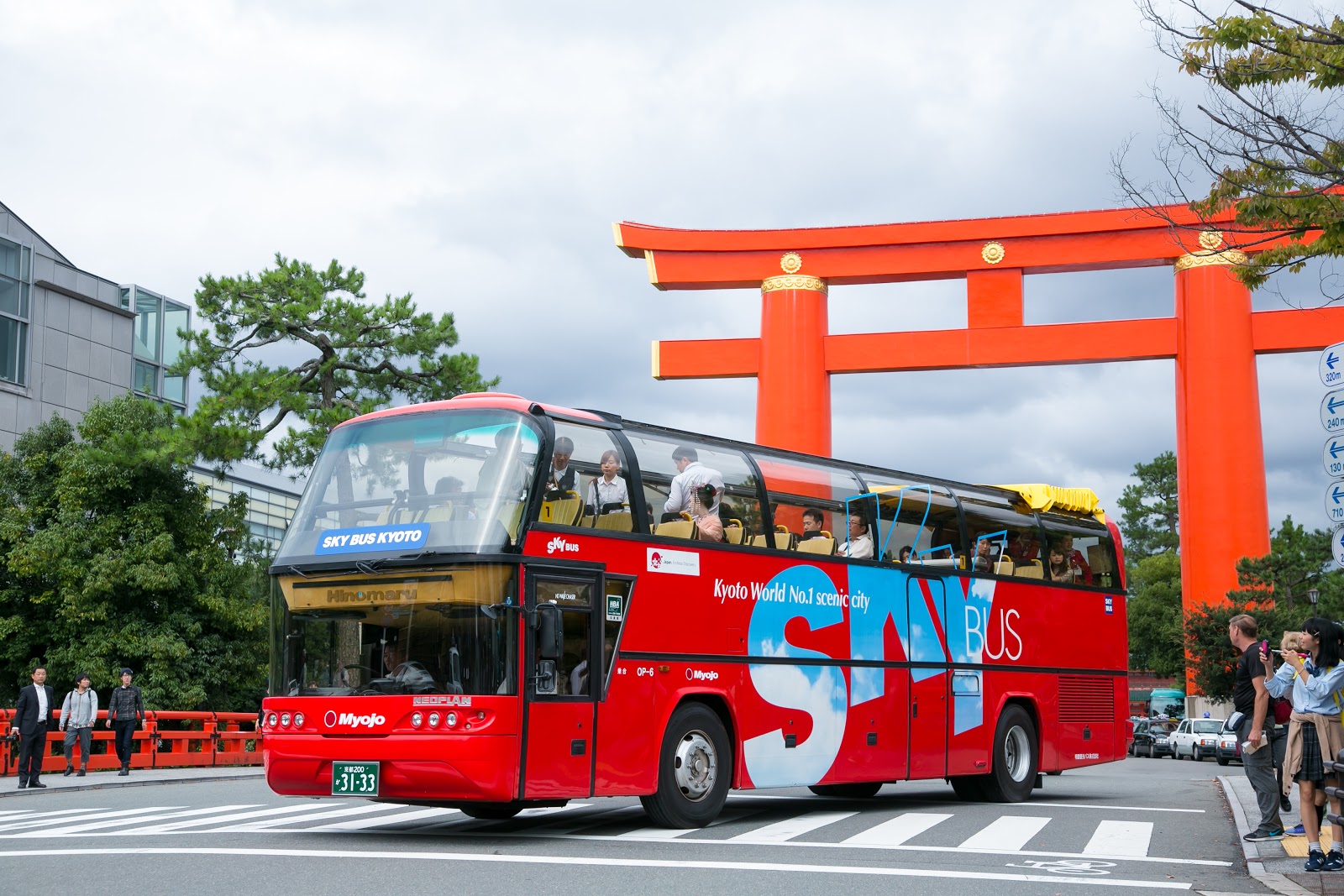
- Tokyo Cheapo (繁體中文)
The Complete Guide to Getting Around in Kyoto
Knowing how to get around in Kyoto is the key to making sure your trip to the ancient capital is as smooth as possible. The world famous attractions are spread across the city, and you don’t want to waste time trekking back and forth. So to save you the trouble, here’s everything you need to know about transport in Kyoto.
The basics of getting around in Kyoto

There are quite a few different transport options in Kyoto and a whole lot of things to do spread across the city.
Public transport options like trains, buses, and subways all accept IC transport cards. The local transport card is called the ICOCA but Tokyo’s SUICA and PASMO transport cards are also accepted. JR train lines stop at Kyoto Station , and so does the Shinkansen. If you’re traveling from Tokyo to Kyoto by Shinkansen, this is where you’ll get off. Some subway lines and bus routes also stop at Kyoto Station, but a number of other subway and private train lines do not.
Navigating Kyoto is easy as the city is laid-out in a grid with streets running north to south, and east to west. It’s also fairly flat so walking and cycling is certainly possible.
Need help navigating Kyoto Station? Then check out our Kyoto Station survival guide .
Kyoto Station
Take the train.
There are so many train lines in Kyoto that it can get a bit overwhelming. However, the key thing to understand is that there are JR train lines and private train company lines. Each train company has different fee systems, and might not accept certain passes. For example, you usually can’t use a JR Pass on a private train line. An IC card can be used on both private and JR lines. There are some trains and stations that don’t accept IC cards, but they are fairly out-of-the-way for most tourists. Also keep in mind that not all train lines pass through Kyoto Station.

In general, you will only take the train in Kyoto if you’re traveling further afield. For example, you could take a train for a day trip to Nara . Most major attractions in Kyoto don’t have train stations nearby, except for Fushimi Inari Shrine and Arashiyama .
Ride the subway
Kyoto has two subway lines which are part of the Kyoto Municipal Subway. The Karasuma Line runs north-south from Kokusaikaikan Station through Kyoto Station and on to Takeda Station. It can get you to places like Gosho Imperial Palace and Kyoto Botancial Gardens .

The other subway line is the Tōzai Line which runs east-west from Uzumasa Tenjingawa Station to Rokujizo Station. Attractions along the Tōzai Line include Nijō Castle and the Higashiyama district .
The two subway lines intersect at Karasuma Oike Station. There are also a few stations where you can transfer between the subway and trains, including Kyoto Station, Nijō Station, and Misasagi Station.
Catch a bus
Buses are a very convenient way to get around in Kyoto. In fact, there is at least one bus stop near most major attractions. However, keep in mind that recently overcrowding on buses has been causing problems for locals . If you’re traveling with large suitcases, we’d encourage you to use alternative methods of transport.
For all buses in Kyoto you enter from the back doors of the bus, and pay at the front as you exit. Bus fares within central Kyoto have a flat fare of ¥ 230 . You can pay either in cash (exact fare) or using an IC transport card. If you travel outside of central Kyoto, the bus may have a ticket system. Take a ticket from the machine by the door when you enter. At the front of the bus there will be a price board, that shows your ticket number and the fare owed. Pay your fare in cash as you exit the bus. Most, but not necessarily all, of these buses will also accept IC cards, but if they do make sure to tap them as you enter and exit the bus.
Cycle around
Kyoto is a relatively flat city, so it’s great for cycling. You can either join a bike tour , or rent a bike , the choice is yours. Just make sure you follow the local laws and road safety rules to avoid any trouble. You should ride on the left-hand side of the road and if a sidewalk has a bike lane, you can ride there too. We also recommend against parking anywhere that has a 駐輪禁止 sign — it means “no bicycle parking”. Of course, you’ll probably see plenty of local cyclists breaking these rules, but it’s best to play it safe.
Go for a walk
Walking is the ultimate Cheapo mode of transport and Kyoto is a very walkable city. The city is fairly flat and the roads use a grid system, so it’s comfortable for strolling and you don’t need to worry about getting lost. Major roads have clearly marked footpaths, but if you walk along residential streets you’ll be sharing the path with cars and cyclists. Don’t let that discourage you though, it’s quite safe as long as you keep an eye out for oncoming traffic.

Keep in mind that Kyoto’s attractions are quite spread out. We recommend picking a neighborhood to wander around, rather than trying to trek between attractions at different ends of the city. The Philosopher’s Path is ideal for a quiet stroll, or head to Gion for geisha spotting . Those who prefer walking with purpose to meandering, should consider joining a walking tour .
Travel passes and discounts for Kyoto
There is a huge variety of Kyoto travel passes available. We like the Skyhop: Hop-on Hop-off Sightseeing Bus because it has a multi-lingual audio guide and you can buy passes online . If you’re just planning a day trip from Osaka, the Kyoto-Osaka Sightseeing Pass or the Hankyu Tourist Pass are good options.
Frequently asked questions
Can you take a taxi in kyoto.
Yes, you definitely can. However, it’s usually an expensive option, unless you’re traveling in a group. There are taxi stands outside most stations, otherwise you can hail one in the street.
What’s the best way of getting around in Kyoto?
There’s no single answer to this because it really depends on where you’d like to go. You can take the train, subway, bus, or even walk or cycle to lots of attractions in Kyoto.
Can you catch an Uber in Kyoto?
You can catch an Uber or other ride-share service in Kyoto, but they’re not exactly the same as in other countries. Ride-shares in Japan are basically just taxi booking services. And they’re not necessarily cheaper than hailing a regular taxi.
While we do our best to ensure it’s correct, information is subject to change.
- Transportation
Get the best Japan Cheapo hacks direct to your inbox

Complete Guide to the Hokkaidō Shinkansen
Where to go and what to do along Japan's northernmost bullet-train route.

9 Things To Do in Fukui
Explore the shiny new stop on the Hokuriku Shinkansen — an easy trip from Tokyo.

11 Best Places to See Cherry Blossoms in Japan
Riverside paths, real castle moats, pagodas and more.

Osaka to Tokyo: The Fastest and Cheapest Ways to Get There
Handy information on your travel options between the two cities.

The Survival Guide to Kyoto Station
Bookmark this for easier travels.

5 Reasons To Visit Ishikawa
The prefecture extends a warm welcome, as part of its efforts to rebuild in the wake of the Noto earthquake.

The Sanyō Shinkansen: Everything You Need To Know
A complete guide to the bullet train between Osaka and Fukuoka, including stops, services & discounts.

Kyoto to Tokyo: The Fastest and Cheapest Ways to Get There
The lowdown on your travel options. Bullet train, highway bus, and more.

Where to Experience Ainu Culture in Hokkaidō
Visit the Upopoy National Ainu Museum, Lake Akan and more.

When is the Best Time to Visit Japan?
When is the best time to visit Japan? It's complicated. Read on for the full breakdown, including recommendations based on interest.

The Complete Guide to Kyoto Discount Travel Passes
The low down on Kyoto travel passes.

Finding Your Way Around Osaka-Umeda Station
The ultimate guide to what is where and which exit you should take to get there.

Recommended hotels located nearby

Close without accepting
Kyoto Bus & Subway Travel Cards & Passes 京都市営地下鉄
- Published on : 13/02/2022
- by : Japan Experience
- Add to favorites
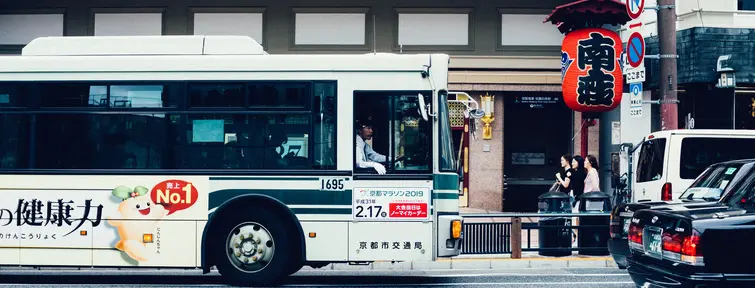
Bus in Kyoto
©Andrew Leu, Unsplash
The city of Kyoto is a center of traditional culture in Japan that is one of the country's most popular destinations. Take a look at how to navigate throughout the city and some of the transportation options that are available.
Kyoto Bus & Subway Fares
Single fares for adults on Kyoto's subway system range from and 220-350 yen for adults and 110-180 yen for minors. Kyoto's subway system has two lines: the north-south Karasuma Line (green) and the east-west Tōzai Line (red).
Kyoto City Buses have a single fare of 230 yen for adults and 120 yen for children within the designated central area. As you travel outside the designated area the fare increases. Pick up a numbered ticket on entry. The fare corresponding with your number is shown on an electronic signboard at the front of the bus.
Kyoto City Subway One-Day Pass
The Kyoto City Subway One-Day Pass allows unlimited travel on Kyoto's subway and costs 800 yen for adults and 400 yen for children.
The Kyoto City Subway One-Day Pass includes discounts on admission to Kyoto Municipal Museum of Art, Nijo Castle, Kyoto Zoo, The Museum of Kyoto and Kyoto International Manga Museum.

Shugakuin, accessible via train or bus in Kyoto
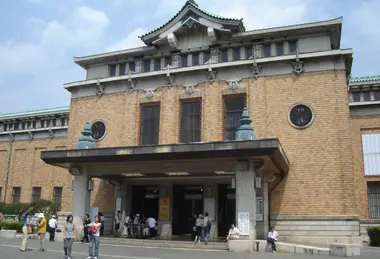
Kyoto KYOCERA Municipal Art Museum , accessible via train or bus in Kyoto

Arashiyama Sagano Bamboo Forest, accessible via bus or train in Kyoto

Kyoto City Bus One-Day Pass
The Kyoto City Bus One-Day Pass allows for unlimited travel on all Kyoto city buses and Kyoto buses within the downtown fixed rate zone (including Arashiyama and Shūgakuin ) and costs 700 yen for adults and 350 yen for children.
The Kyoto City Bus One-Day Pass is available from the Kyoto Station Tourist Information Center, subway station ticket windows, any Kyoto bus and Kyoto City Bus Offices.
Subway, Bus One-Day & Two-Day Passes
These passes are valid for the Kyoto subway, Kyoto city buses , Kyoto buses and certain Keihan buses (namely to Yamashina and Daigo). Unlike the Kyoto City Bus One-Day Pass (see below), the One and Two-Day Subway, Bus Passes include travel to Saihō Temple (Kokedera; Moss Temple), Ōhara and Iwakura .
The Subway, Bus One-Day Pass is valid only for the day it is issued (not 24 hours) and costs 1,100 yen for adults and 550 yen for children.
The Subway, Bus Two-Day Pass is valid for two consecutive days and costs 2,000 yen for adults and 1,000 yen for children.
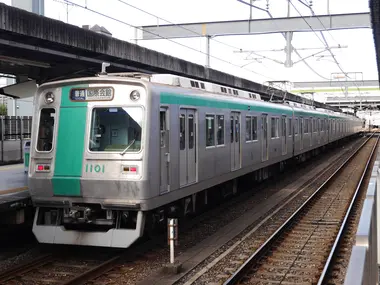
Kyoto Subway rideable with the Subway, Bus Pass
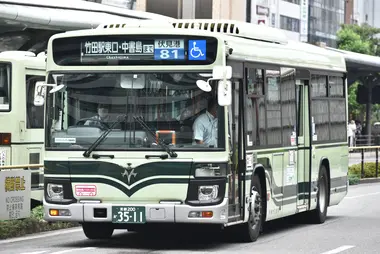
Kyoto Bus rideable with the Subway, Bus Pass
K'Loop Buses
K'Loop Buses operate on weekends and public holidays and travel in a clockwise loop connecting many of Kyoto's attractions and UNESCO World Heritage Sites.
K'Loop Bus Stops
Kyoto Station Hachijoguchi | Shijo Kawaramachi and Nishiki Market | Kyoto City Hall/Honnoji Temple |
Nijo Castle | Kyoto Imperial Palace (Gosho) | Kitano Tenmangu/Kamishichiken | Kinkakuji Temple |
Daitokuji Temple | Botanical Gardens | Shimogamo Shrine/Tadasu-no-mori | Demachiyanagi | Ginkakuji |
Temple Heian Jingu/Okazaki Museum area | Chion-in Temple and Maruyama Park | Gion and Yasuka Shrine |
Kiyomizudera | Sanjusangendo/Kyoto National Museum
The fare is 1,500 yen (700 yen for children) for a day pass allowing you to hop on and hop off at any stop. Buy the ticket on the bus from the driver.
JR-West Kansai Area Pass and Kansai Wide Area Pass
Although not valid on Kansai's subways, the J R-West Kansai Area Pass can be used on JR trains connecting Kyoto , Osaka , Nara , Kobe , Nishi-Akashi and Himeji as well as the Haruka Express from Kansai International Airport (KIX) .
The pass can be bought for 1-day , two successive days , three successive days and four successive days - with half price for children (age 12 or under). The JR-West Kansai Area Pass is available from major stations in the Kansai.
The pass is not valid on Shinkansen trains.
Icoca and Kansai One Pass
Icoca is issued by JR West in the Osaka metropolitan region, Kyoto, Kobe, Okayama , and Hiroshima . Pasmo and Suica Cards that are distributed in Tokyo are also usable in Icoca .
The Kansai One Pass is a special Icoca, also for foreign passport holders only, that has the bonus of special deals and discounts at numerous sightseeing spots and tourist attractions throughout the Kansai area.
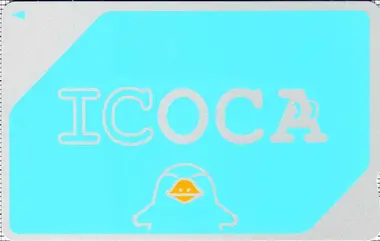
Kansai One Pass card
Showing a non-Japanese passport entitles the purchaser of an Icoca card to a substantial fare discount for the Haruka express train serving Kansai International Airport, in a package called Icoca & Haruka .
Operating Hours of Kyoto Buses & Subway
Kyoto's subway runs from around 5.30 am until 11.55 pm, 7 days a week with reduced services at the weekends and public holidays .
Tunneling was slow during the construction of the two lines to allow time for archaeological research on Kyoto's long history. Items of interest found during the construction are displayed at Karasuma Oike Station .
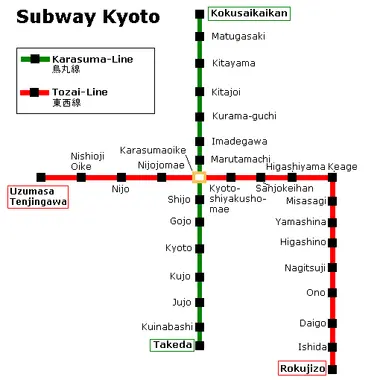
Kyoto Metro Map
More Travel Tips
- How to use IC cards in Japan
- Getting around Kyoto
- Buses in Kyoto
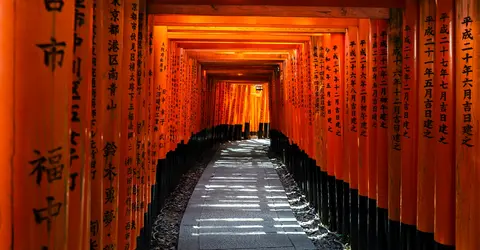
KANSAI Area Pass Regional Japan Rail Passes
- Included : Economic and simple, Unlimited travel

KANSAI WIDE Area Pass Regional Japan Rail Passes
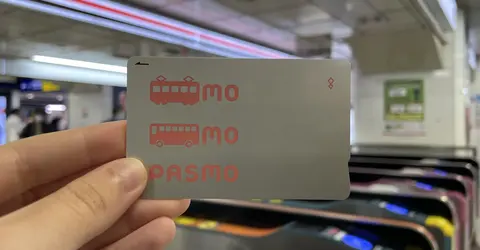
Pasmo Pre-paid transport pass Prepaid Cards
- Included : Pre-charged and ready to use, Can be used as an electronic wallet, Valid in Tokyo and other major cities

Suica Pre-paid Transport pass Prepaid Cards
- Included : Can be used as an electronic wallet, Pre-charged and ready to use, Valid in Tokyo and other major cities
Our houses in Kyoto
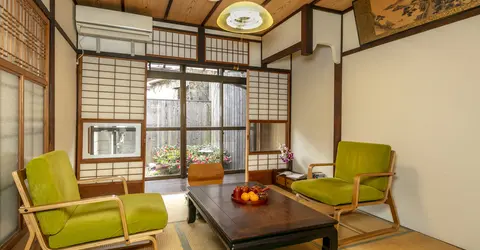
Koyasu Rent a house in Kyoto
Ginkakuji, Kyoto
- 4 travelers

Rohji Rent a house in Kyoto
Okasaki, Kyoto
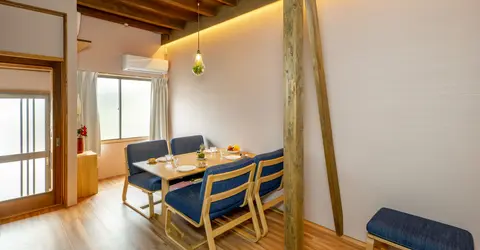
Kizuna Rent a house in Kyoto
Nijo Castle, Kyoto
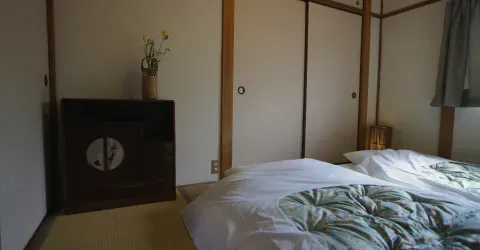
Demachi Rent a house in Kyoto
Demachiyanagi, Kyoto
- 3 travelers
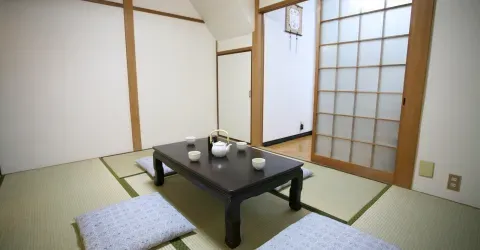
Demachi 2 Rent a house in Kyoto
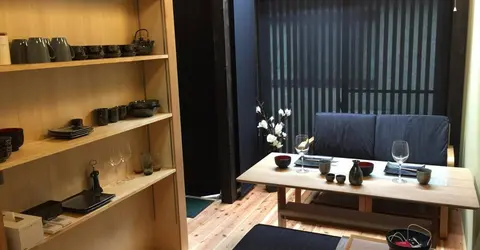
Kikuhama Rent a house in Kyoto
Gojo, Kyoto
- 2 travelers
Our activities in Kyoto
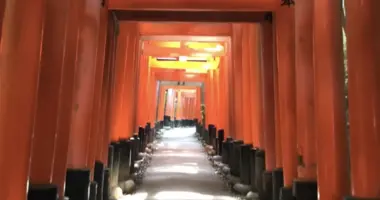
Fushimi Inari, the mountain sanctuary Activities in Kyoto
- Duration : 3 hour
- Location : Kyoto

Shodo, Japanese calligraphy Activities in Kyoto
- Duration : 1 hour

Culinary tour in Kyoto Activities in Kyoto
- Duration : 8 hour
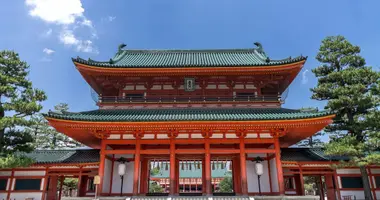
Kyoto Discovery, half day Activities in Kyoto
- Duration : 4 hour

Ikebana, the art of flower arrangement Activities in Kyoto

Butoh Dance Activities in Kyoto
- Duration : 45 minute
Our tours in Kyoto

Discover Japan Group Tours in Japan
- Duration : 13 days
- Locations : Tokyo, Hakone Mt Fuji, Kyoto, Nara, Hiroshima, Miyajima
- Included : Visits & meals, English-speaking tour leader, Hotel temple, 3*/4* Hotels & Ryokan

The Tokaido Road Group Tours in Japan
- Duration : 14 days
- Locations : Tokyo, Hakone Mt Fuji, Kyoto, Nara, Koyasan, Osaka
- Included : English-speaking tour leader, 3*/4* Hotels & Ryokan, Hotel temple, Visits & meals
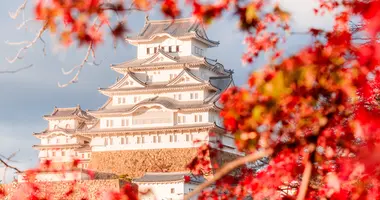
Autumn Leaves Photography Group Tours in Japan
- Duration : 12 days
- Locations : Tokyo, Mt Fuji (Kawaguchiko), Osaka, Himeji, Kyoto, Nara
- Included : English-speaking tour leader, 3* Hotels & Ryokan, Visits & meals
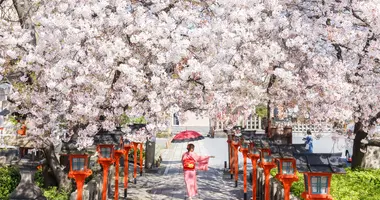
Cherry Blossoms Photography Group Tours in Japan
- Locations : Tokyo, Kyoto, Osaka, Nara, Kawaguchiko, Tokyo
- Included : English-speaking tour leader, 3*/4* Hotels & Ryokan, Visits & meals

Urban and Rural Japan Group Tours in Japan
- Duration : 21 days
- Locations : Tokyo, Hakone Mt Fuji, Kyoto, Nara, Koyasan, Osaka, Kobe, Takachiho, Kumamoto, Nagasaki, Hiroshima, Miyajima
All the themes of the city

Unique Trains in Japan

Japanese Stations
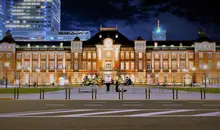
Getting Around Tokyo
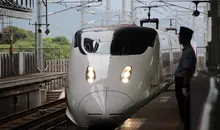
Shinkansen Travel Tips

Itineraries for Japan
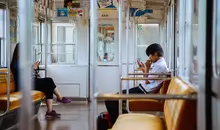
Trains in Japan
Please select your country on the list below:
- Switzerland
- United Kingdom
- Other countries

Kyoto (���s, Kyōto) served as Japan's capital and the emperor 's residence from 794 until 1868 . It is one of the country's ten largest cities with 1.5 million inhabitants and a modern face.
Over the centuries, Kyoto was destroyed by many wars and fires, but due to its exceptional historic value, the city was dropped from the list of target cities for the atomic bomb and escaped destruction during World War II . Countless temples , shrines and other historically priceless structures survive in the city today.
Top attractions in Kyoto
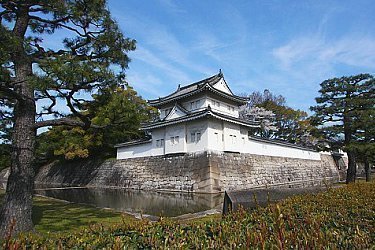
Nijo Castle ••
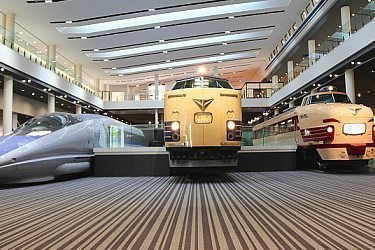
Kyoto Railway Museum •
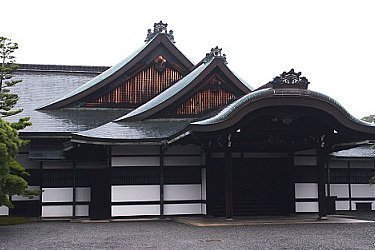
Sento Palace •
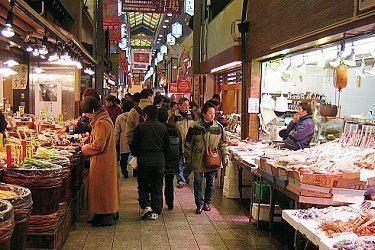
Nishiki Market •
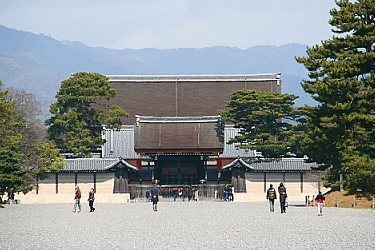
Kyoto Imperial Palace •
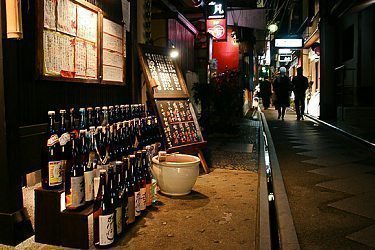
Pontocho •
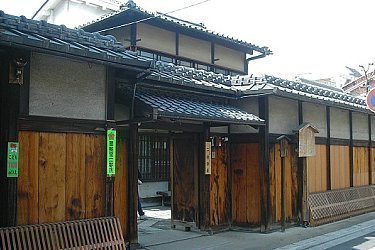
Nijo Jinya •
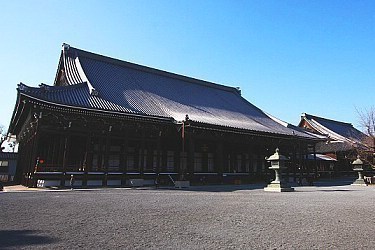
Honganji Temples •
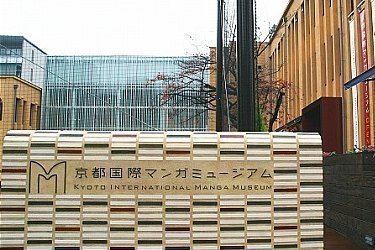
Kyoto Manga Museum
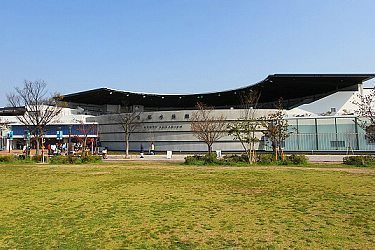
Kyoto Aquarium
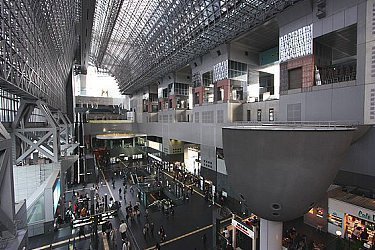
Kyoto Station
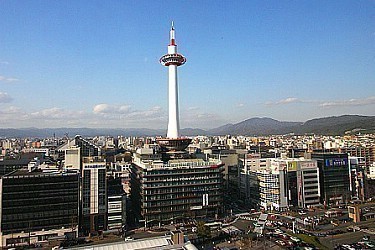
Kyoto Tower
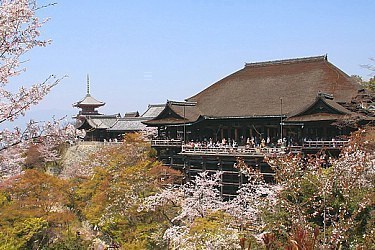
Kiyomizudera •••
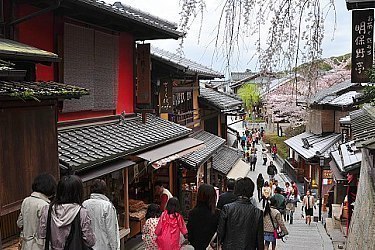
Higashiyama •••
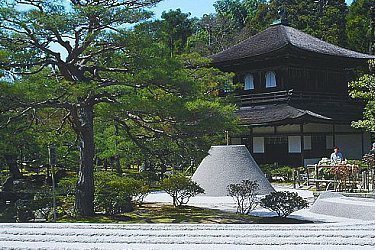
Ginkakuji •••
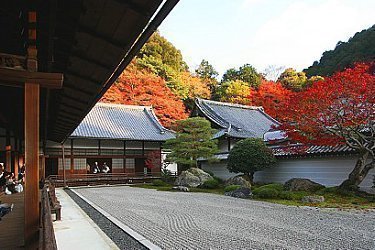
Nanzenji Temple ••
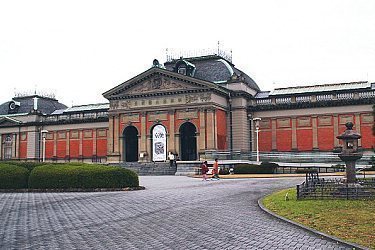
Kyoto National Museum ••
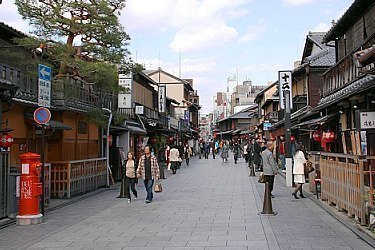
Gion •
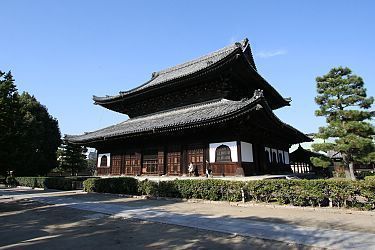
Kenninji Temple •
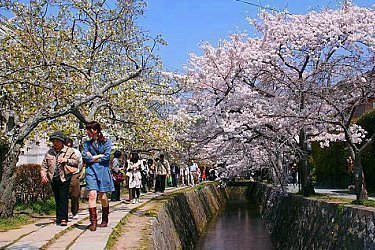
Philosopher's Path •
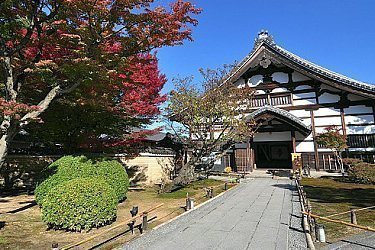
Kodaiji Temple •
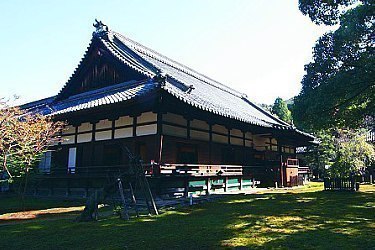
Shorenin Temple •
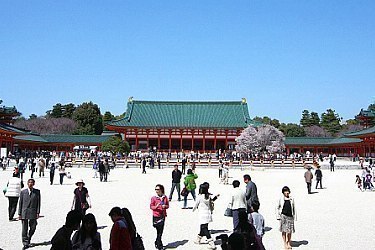
Heian Shrine •
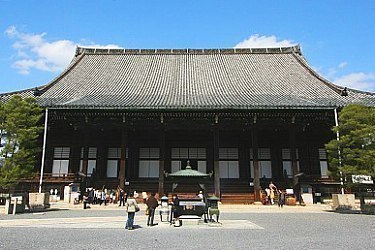
Chionin Temple •
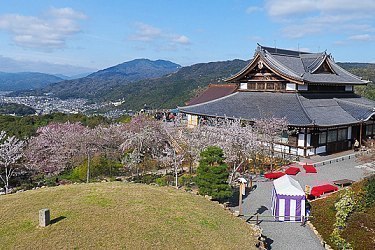
Shogunzuka Mound
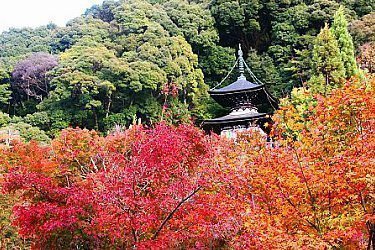
Eikando Temple
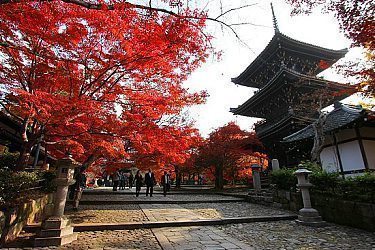
Shinnyodo Temple
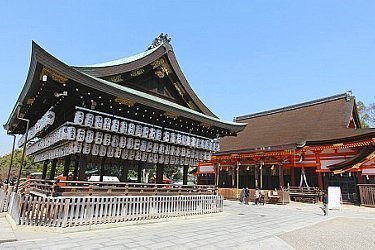
Yasaka Shrine
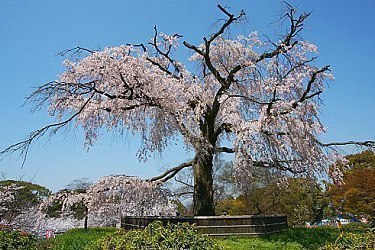
Maruyama Park
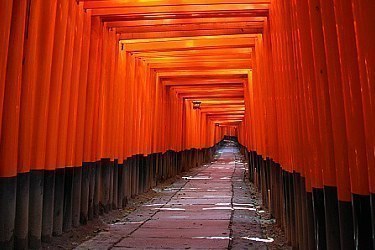
Fushimi Inari Shrine •••
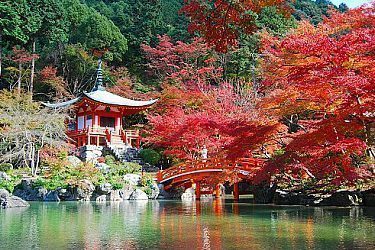
Daigoji Temple •
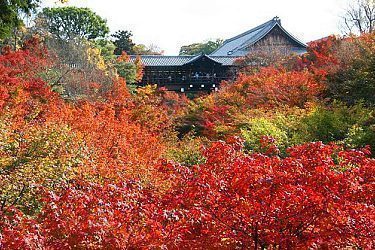
Tofukuji Temple •
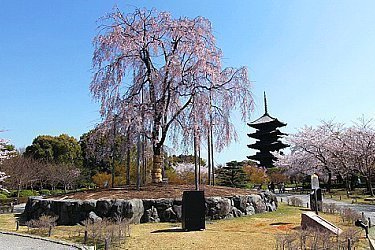
Toji Temple •
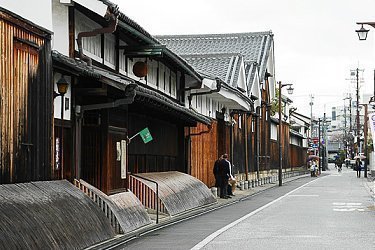
Fushimi Sake District
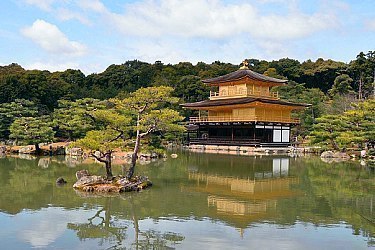
Kinkakuji •••
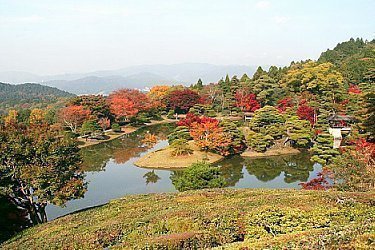
Shugakuin Villa ••
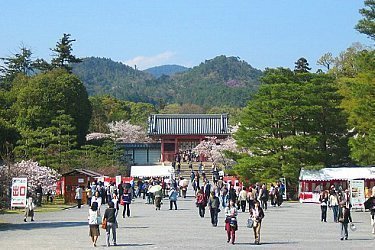
Ninnaji Temple ••
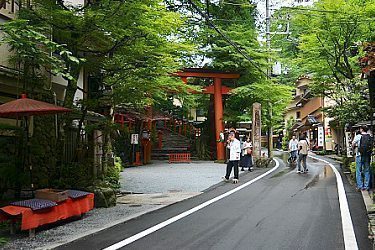
Kibune •
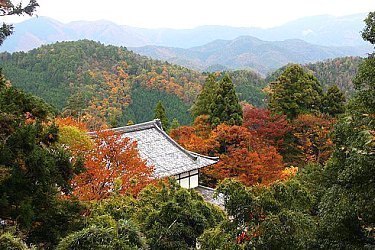
Kurama •
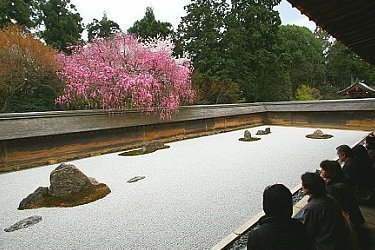
Ryoanji Temple •
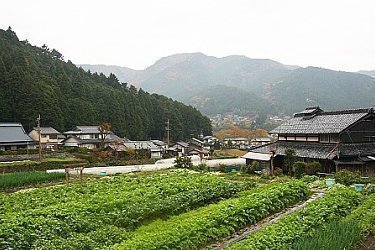
Ohara •
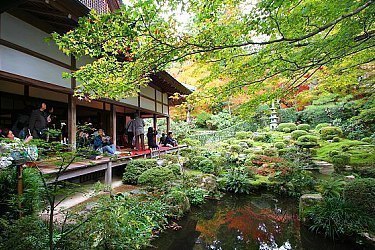
Sanzenin Temple •
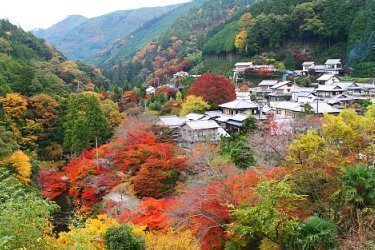
Takao •
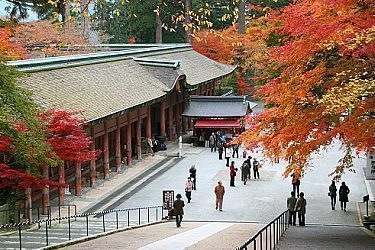
Hieizan •
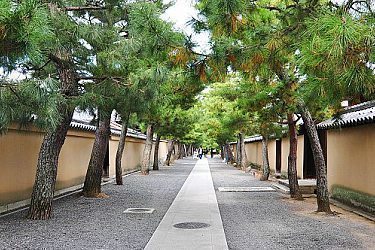
Daitokuji Temple •
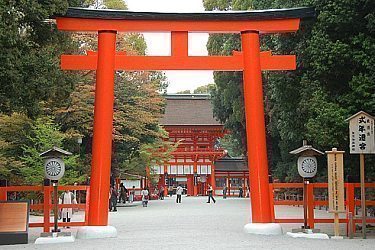
Kamo Shrines •
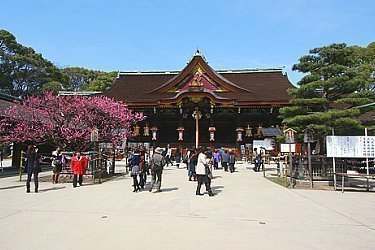
Kitano Tenmangu •
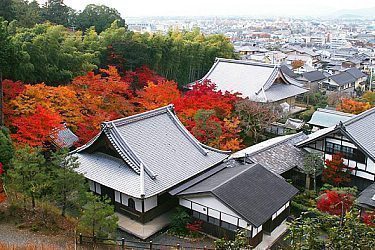
Enkoji Temple
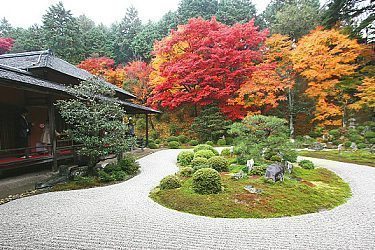
Manshuin Temple
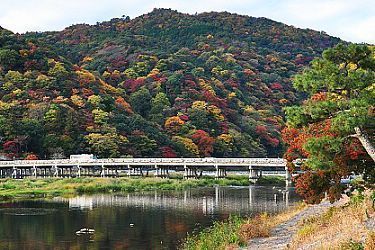
Arashiyama ••
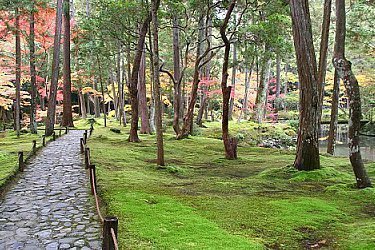
Kokedera ••
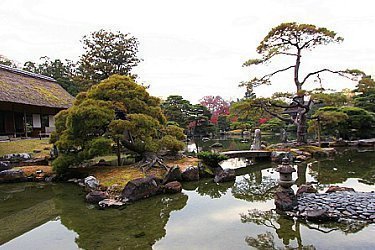
Katsura Villa ••
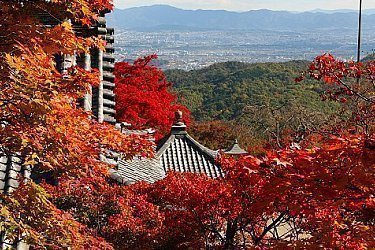
Yoshiminedera •
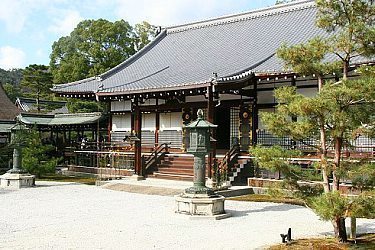
Daikakuji Temple •
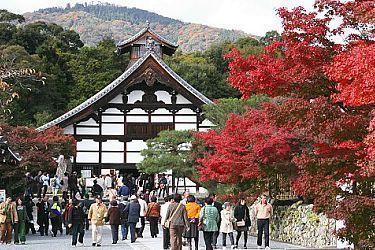
Tenryuji Temple •
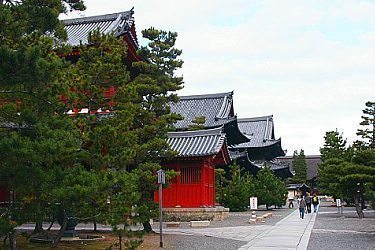
Myoshinji Temple •
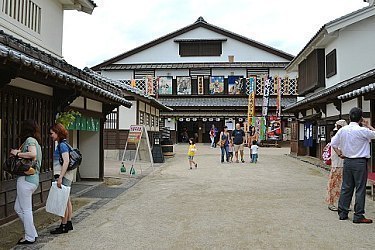
Toei Eigamura •
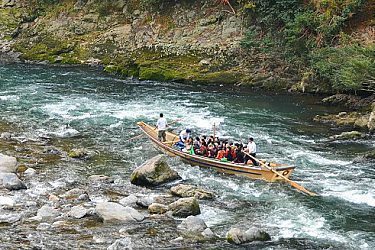
Hozugawa Cruise
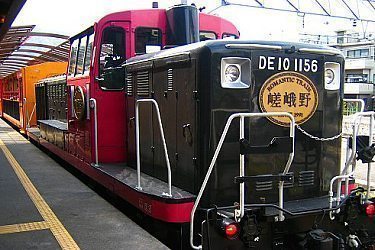
Sagano Railway
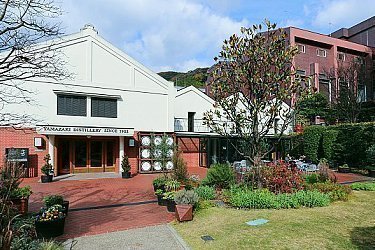
Yamazaki Whisky Distillery
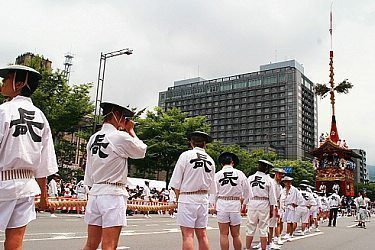
Gion Matsuri ••
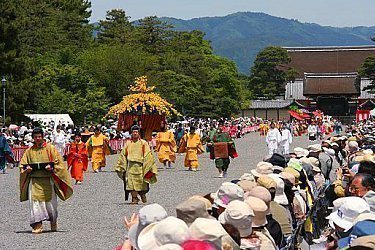
Aoi Matsuri •
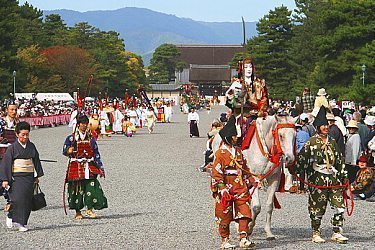
Jidai Matsuri •
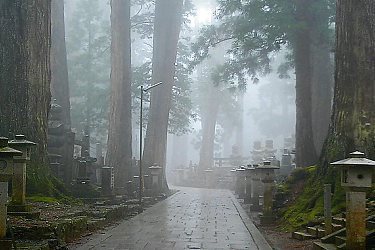
Mount Koya •••
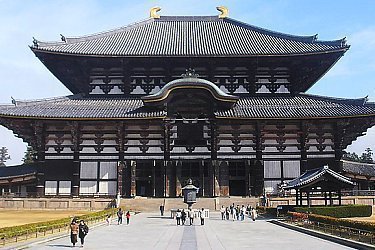
Nara •••
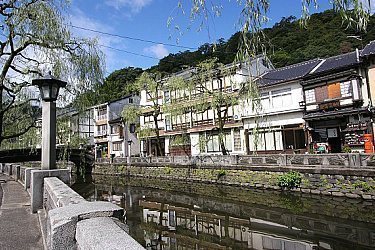
Kinosaki ••
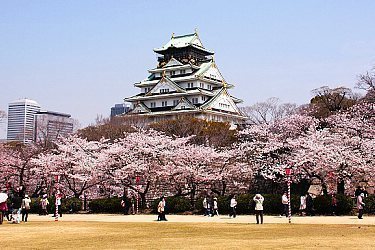
Osaka ••
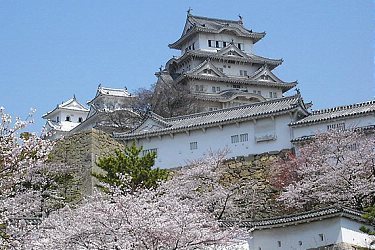
Himeji ••
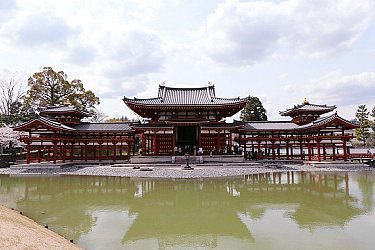
Amanohashidate •
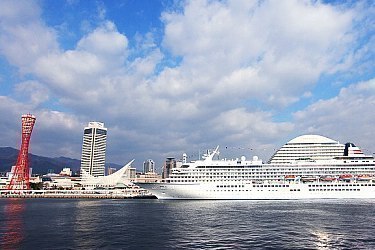
Kobe •
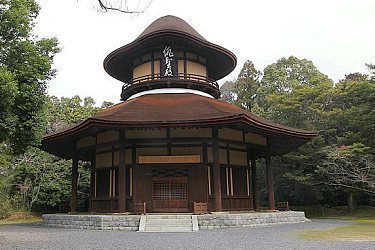
Iga Ueno •
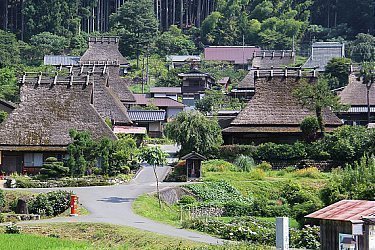
Asuka and Sakurai
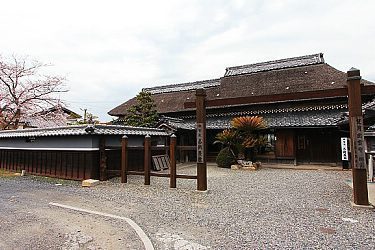
Kyoto by interest

Getting there and around
Itinerary ideas.
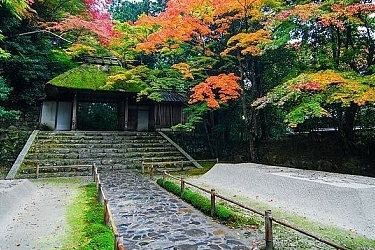
- Walk the Philosopher's Path
- Beautiful temples and shrines
- Attractive Higashiyama streets
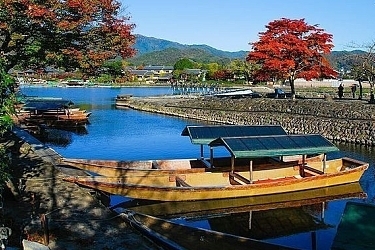
- See the bamboo groves
- Visit the monkey park
- Serene temples and gardens
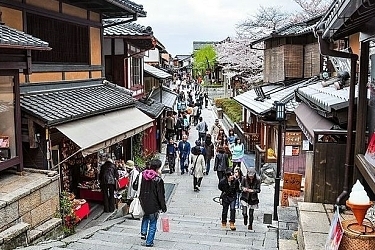
- Visit beautiful temples
- Explore Higashiyama and Gion
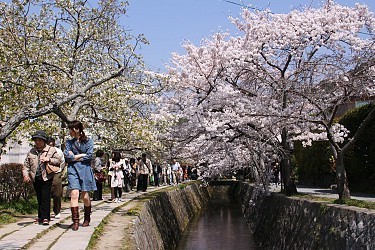
- Visit beautiful temples and shrines
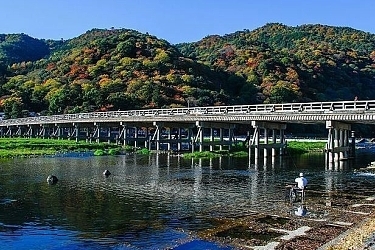
- Explore attractive Arashiyama
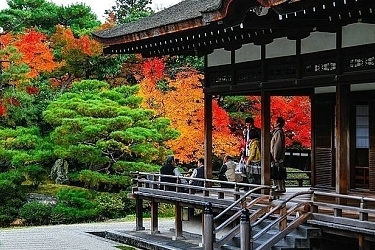
- Explore Kyoto's northern side
- Visit Kinkakuji , Ryoanji and Ninnaji temples
Questions? Ask in our forum .

Links and Resources
Kyoto official travel guide, cycle kyoto, hotels around kyoto, kyoto hotel guide.
How to choose the best places to stay in Kyoto
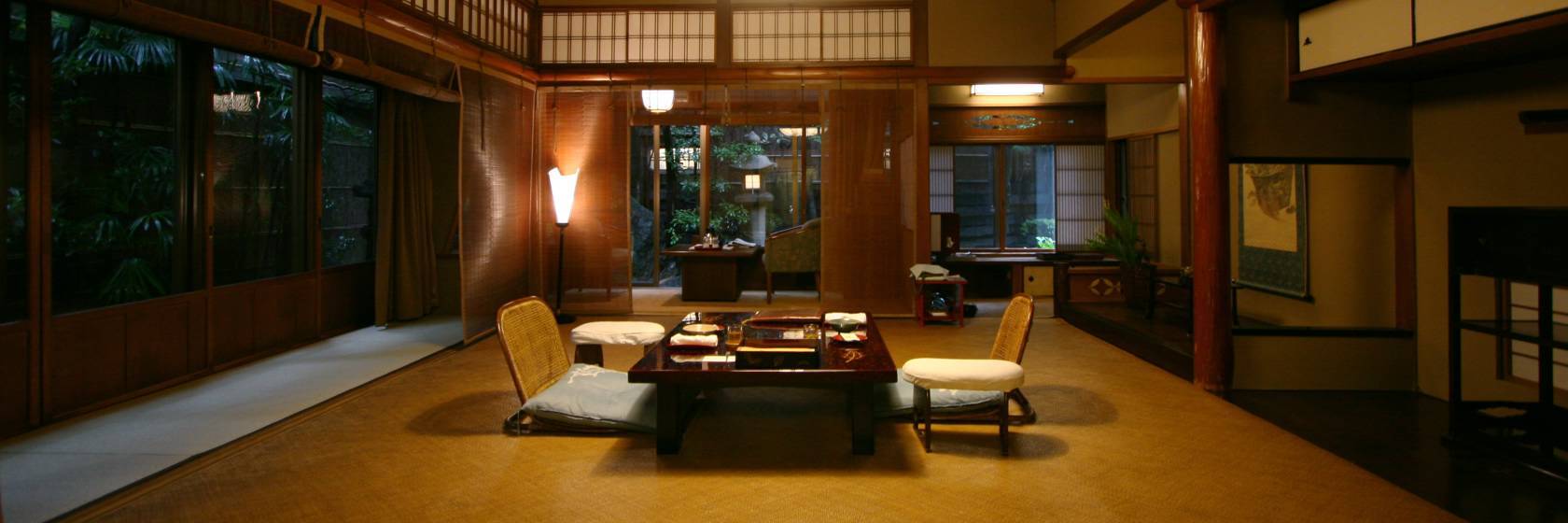
Experiences around Kyoto
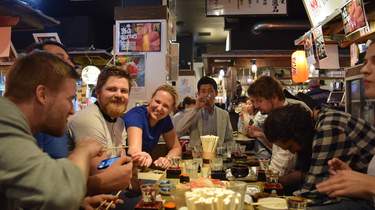
Inside Kyoto
A Kyoto Travel Guide
Special Kyoto Bus, Train and Subway Passes
Here is everything you need to know about special Kyoto bus, train and subways passes. You can save a lot of money with these Kyoto transport passes.

Important Note: There are very few JR lines in Kyoto, so the JR Rail Pass is of limited utility here. If you plan to do a lot of travelling by JR trains after you leave Kyoto, it might make sense not to activate your card until the morning you leave Kyoto (you can activate the card at the main JR ticket office in Kyoto Station).
Where can you buy Kyoto bus, subway and train passes: The best place to buy the passes listed on this page is at the main Kyoto Bus Information Center in front of Kyoto Station.
Here’s a rundown of the main special ticket passes in Kyoto:
Kyoto Bus and Subway Passes
Kyoto sightseeing one – and two-day pass card.
- All-day Pass Adult ¥1,200 / Child ¥600
- Two-day Pass Adult ¥2,000 / Child ¥1,000
- Can be used for the city buses and subways.
- Unlimited use for one or two days.
Surutto Kansai Miyako Card
- ¥1,000, ¥2,000, ¥3,000 or ¥5,000
- Can be used on city buses and subway lines, the Hankyu Line, the Keihan Line as well as other participating private companies.
- Can be used for the value on the card. Each trip is deducted from the value of the card as it is used.
Traffica Kyoto Card
- ¥1,000 or ¥3,000
- Valid on the city subways and buses.
Check Hotel Availability
Destination, check-in date, check-out date.

Kyoto Vacation Checklist
- For all the essentials in a brief overview, see my First Time In Kyoto guide
- Check Kyoto accommodation availability on Booking.com and Agoda.com - often you can book with no upfront payment and free cancellation
- You can buy shinkansen (bullet train) tickets online from Klook - popular routes include Tokyo to Kyoto , Kyoto to Osaka and Kyoto to Tokyo
- Need tips on where to stay? See my one page guide Where To Stay In Kyoto
- See my comprehensive Packing List For Japan
- Buy a data-only SIM card online for collection when you arrive at Kansai International Airport (for Osaka and Kyoto) or Tokyo's Narita Airport . Or rent an unlimited data pocket wifi router
- Compare Japan flight prices and timings to find the best deals
- If you're making frequent train journeys during your visit, you might save money with Japan Rail Pass – see if it's worth it for you
- A prepaid Welcome Suica card makes travelling around Kyoto easy – here's how
- World Nomads offers simple and flexible travel insurance. Buy at home or while traveling and claim online from anywhere in the world
Kyoto District Map

- Central Kyoto
- Northwest Kyoto
- Northern Higashiyama
- Southern Higashiyama
- Downtown Kyoto
- Kyoto Station Area
- South East Kyoto
Disclosure: InsideKyoto.com is a participant in the Amazon Services LLC Associates Program, an affiliate advertising program designed to provide a means for sites to earn advertising fees by advertising and linking to amazon.com and amazon.co.uk. World Nomads provides travel insurance for travellers in over 100 countries. As an affiliate, we receive a fee when you get a quote from World Nomads using this link. We do not represent World Nomads. This is information only and not a recommendation to buy travel insurance.

Day Pass Tickets
If you are planning on traveling around Kyoto to the fullest during your trip, we recommend you purchase convenient and money-saving day passes. Because these tickets are sold by various companies that control different sections of the Kyoto train, subway, and bus network there is unfortunately no “universal pass” that covers everything, but using the following information you can choose the pass that best suits your needs.
SUBWAY, BUS ONE-DAY PASS
This pass can be used on all Kyoto Subway lines and City Bus lines, as well as on Kyoto Bus (with some exceptions) and Keihan Bus (with some exceptions). It gives you an unlimited number of rides on these networks for one day and may be the best choice if you are planning to spend most of your time in Kyoto City proper. You can also get special offers at some tourist spots if you present this ticket on the day of use.
Ticket Types
Adults: ¥1,100, children (6 to 11 years old): ¥550
(Prices as of April 1 st , 2024. Ticket designs are subject to change.)
On the bus: Insert your pass into the card slot of the machine located next to the driver before exiting the bus on your first ride. The date will be printed on the back of the card, so you can just show the date on your pass to the driver when exiting the bus for all rides after that until your pass expires.
On the subway: Insert your pass into the turnstile slot and proceed through the gate, but don’t forget to take your card after you pass through. The date will be printed on the back of the card when you go through the ticket gate for the first time. When you arrive at your destination, insert the pass into the turnstile slot to exit, once again taking care not to leave the pass behind.
Where to Buy
You can buy the subway and bus pass at any subway station in Kyoto, at commuter pass sales booths, at the Kyoto City Bus and Subway Information Centers, or at the Kyoto City Bus Management Center. For more details, please visit the official website .
SUBWAY ONE-DAY PASS
This pass only covers the subway and can be used for unlimited rides on all Kyoto Subway lines for the duration of one day. You can also get special offers at some tourist spots if you present this ticket on the day of use.
Adults: ¥800, children (6 to 11 years old): ¥400
Insert your pass into the turnstile slot and proceed through the gate, but don’t forget to take your card after you pass through. The date will be printed on the back of the card when you go through the ticket gate for the first time. When you arrive at your destination, insert the pass into the turnstile slot to exit, once again taking care not to leave the pass behind.
Where to Buy
You can buy the subway one-day pass at ticket windows or ticket machines at any subway station in Kyoto, at commuter pass sales booths, and at the Kyoto City Bus & Subway Information Center. For more details, please visit the official website .
HANKYU HANSHIN ONE-DAY PASS
The Hankyu Hanshin One-Day Pass gives you unlimited access to all Hankyu, Hanshin, and Kobe Kōsoku train lines, which includes lines that connect to the cities of Kyoto, Osaka, and Kobe. If you want to explore all of these cities in a short space of time, this pass is a good choice.
One-day pass: ¥1,600 (no children’s fare available)
You can buy the Hankyu Hanshin One-Day Pass at airports or at Hankyu Tourist Centers and respective railway stations. The complete list of locations can be found at the Enjoy! OSAKA KYOTO KOBE website.
If you have any inquiries, please contact one of the Hankyu Tourist Centers.
KANSAI THRU PASS
The Kansai Thru Pass gives unlimited access to most non-JR railway, subway, and bus networks in the Kansai area, making it very convenient for those who want to explore the entire Kansai region: Kyoto, Osaka, Kobe, Nara, and Wakayama. It is essentially the opposite of the Japan Rail Pass, and is also only available to foreign tourists visiting Japan for sightseeing with “temporary visitor” status. The Kansai Thru Pass comes as a two-day or three-day type and can be used on non-consecutive days within its period of validity. When you purchase this pass, you will receive a free area map showing where the pass can be used and a set of coupons. Holders of the Kansai Thru Pass are also eligible for special promotions at many tourist sites.

The Kansai Thru Pass can be purchased at a travel agency before your visit, or after you arrive in Japan at the Tourist Information Center at Kansai International Airport or the Kyoto Station Bus Information Center. (For other locations, please visit the official website .) You will have to present your passport and fill out an application form at the time of purchase.
Kyoto Station Bus Information Center

IMAGES
VIDEO
COMMENTS
Buses have announcements and displays in English. Available from roughly 6:00 a.m.-10:00 p.m. Note that work and school commuting times are crowded. (7-9a.m., 6-7 p.m.) You will find priority seating on all buses. Yield these seats to seniors, people with disabilities, and people with infants, etc. Refrain from talking loudly or making phone ...
The Kyoto City Bus & Kyoto Bus One-Day Pass is 600 yen for adults and 300 yen for children. This gives you one day's unlimited travel on Kyoto City Bus and Kyoto Bus routes within the flat fare zone. The Kyoto Subway & Bus Pass covers all Kyoto City buses, all Kyoto Municipal Subway trains and some buses run by the Kyoto Bus and Keihan Bus ...
Fares and Bus passes. Kyoto Municipal buses are painted green. There are two different types which are described in detail below. ... The City Bus All-Day Pass is available to travel an unlimited number of trips per day. It can be bought in all buses or from automatic ticket vending machines at several stops: Adults: ¥700 (~US$4.57) since ...
If you plan to use the bus a lot, you should probably buy yourself a bus pass. For more details, see our Special Kyoto Bus, Train and Subway passes page. Arm yourself with an English-language bus map. The map is called: Bus Navi: Kyoto City Bus Sightseeing Map. Pick up a hardcopy version of this map at the Kyoto Bus Information Center, just ...
1 Travel Map "Subway & Bus Navi". This map is designed to make your sightseeing days a bit easier by highlighting the most convenient Kyoto City bus and subway routes available to each tourist location. Front Side: Highlights the fastest and easiest way to access major tourist locations.The map also will inform you on how to take the bus and ...
1 Arukumachi KYOTO Route Planner (Route Search) The app will inform you of the best possible route, fare, and travel time using the bus and railway in Kyoto city. All you need to do is enter the place of departure and destination. The app is free to use. Arukumachi KYOTO Route Planner JA Arukumachi KYOTO Route Planner EN.
The Raku bus is basically a tourist bus with a route that caters to the Kyoto sightseeing spots. The bus fare for the Raku bus is a flat 230 yen per ride. The boarding process and payment process is a little different with the Raku bus. You'll board at the front, and also pay as soon as you get on the bus.
To use the bus within the city center, the fare is ¥220 for adults, and ¥110 for children (aged 6 to 12 years).It doesn't matter if you are traveling one or ten stops, as long as you are in the city bus the fare is the same. So you may as well walk if you are just going one stop. Buses can get quite full, especially near the main centers.
The bus covers parts of the city that trains don't reach. Many of Kyoto's most popular attractions - including Kinkaku-ji and Ginkaku-ji temples - are not located near train or subway stations, and the bus is the ideal option to bridge the gap. Kyoto has a wealth of bus routes operated by a few different companies, and most make announcements in both English and Japanese.
Alternatively, you can reach Osaka and Nara using the local trains from Kyoto Station. You can take the 45-minute Miyakoji Rapid Service train to Nara and if you're going to Osaka, take either the Hankyu Line or the Keihan Line. It'll take around 45-minutes to get to Osaka or 15 minutes by high-speed train.
The "Sky Hop Bus" is a, double-decker and open-top sightseeing bus that offers tours around Kyoto where you can get on and off whenever you like. Get on and off SKY HOP tourist buses anywhere with a 1-day or 2-day pass. SKY HOP BUS KYOTO runs 12 departures per day. Timetable will change depending on the season, so please check the official ...
Travel passes and discounts for Kyoto. There is a huge variety of Kyoto travel passes available. We like the Skyhop: Hop-on Hop-off Sightseeing Bus because it has a multi-lingual audio guide and you can buy passes online. If you're just planning a day trip from Osaka, the Kyoto-Osaka Sightseeing Pass or the Hankyu Tourist Pass are good options.
Kyoto City Bus One-Day Pass. The Kyoto City Bus One-Day Pass allows for unlimited travel on all Kyoto city buses and Kyoto buses within the downtown fixed rate zone (including Arashiyama and Shūgakuin) and costs 700 yen for adults and 350 yen for children.. The Kyoto City Bus One-Day Pass is available from the Kyoto Station Tourist Information Center, subway station ticket windows, any Kyoto ...
Applicable Routes & Lines. Subway - All Lines (Karasuma Line, Tozai Line) Kyoto City Bus - All Routes. Kyoto Bus (Applicable Routes Listed Below) Ohara, Iwakura Muramatsu, Iwakura Jissoin Temple, Ichihara, Daikakuji, Kiyotaki & Kokedera are the routes available under the pass. However, seasonally limited routes such as 51 Hieizan line (Kyoto ...
Kyoto is incredibly easy to explore by public transport (trains, subways, buses and taxis) or under your own steam (by bicycle or walking). This is a detailed guide to getting around Kyoto, with information on the best way to get to each part of the city. Kyoto has a world-class public transport system: the buses, trains and subways will get ...
Located in Kyoto, this traditional Japanese guest house features free Wi-Fi and a free public computer. Shichijo Onmae bus stop is 3 minutes' walk away. A seating area and shared bathroom are provided with each room at Guesthouse KYOTO COMPASS. Free toiletries are provided and blankets are available upon request. Select rooms have a garden view.
Kyoto Sightseeing One - and Two-day Pass Card. All-day Pass Adult ¥1,200 / Child ¥600. Two-day Pass Adult ¥2,000 / Child ¥1,000. Can be used for the city buses and subways. Unlimited use for one or two days.
The Hankyu Hanshin One-Day Pass gives you unlimited access to all Hankyu, Hanshin, and Kobe Kōsoku train lines, which includes lines that connect to the cities of Kyoto, Osaka, and Kobe. If you want to explore all of these cities in a short space of time, this pass is a good choice. One-day pass: ¥1,600 (no children's fare available)